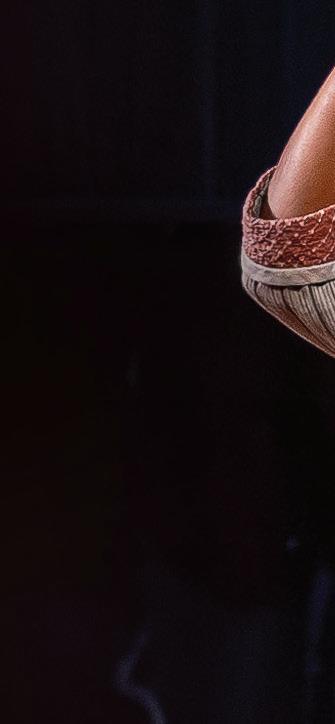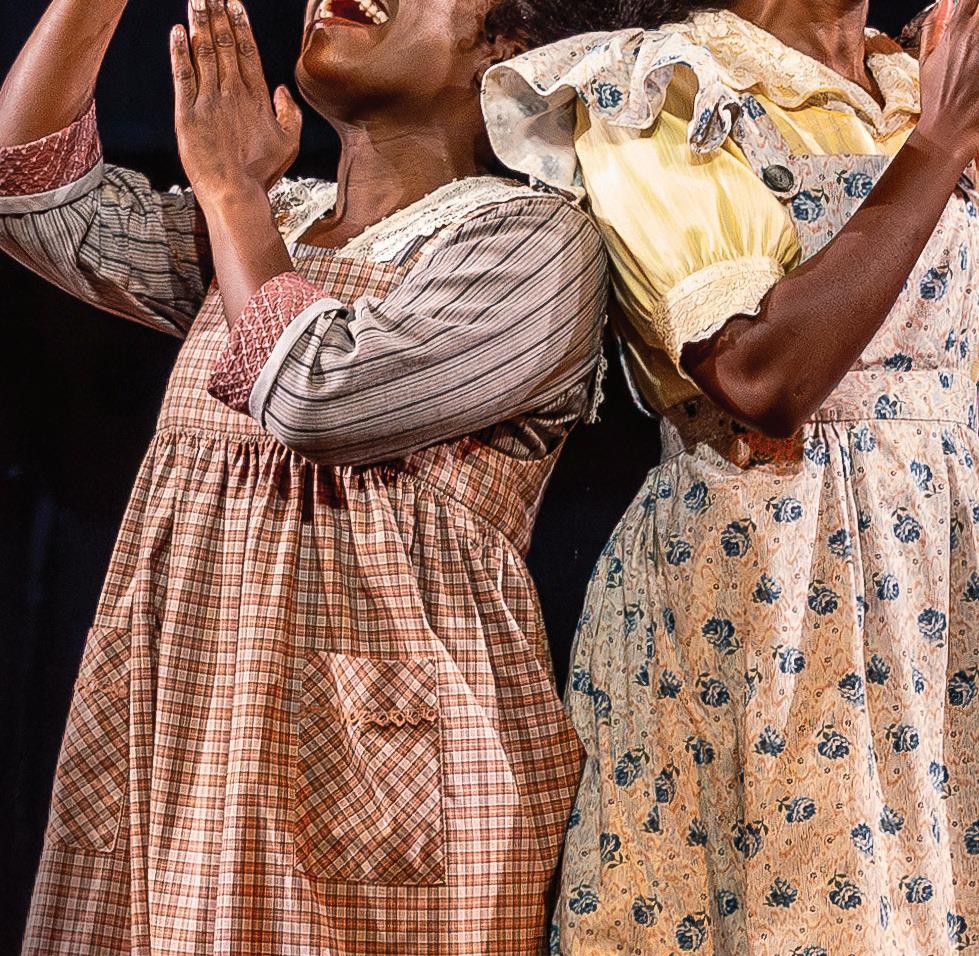
Chicago keeps controversial police promotion list secret by


Chicago keeps controversial police promotion list secret by
Chicago’s drag superstar joins smallscreen superheroes in Ironheart. by
04 Investigation Chicago is refusing to release a list of officers who received controversial “merit” promotions.
08 Climate Are “real” Chicago winters a thing of the past?
09 Cra Work Chicago native Henry Gross makes art out of glass.
10 Books A new book tells the story of a Japanese Jewish family interned in an American concentration camp.
11 Preview Transilience celebrates trans and queer artists with free performances in the parks.
12 Preview Pivot Arts Festival focuses on artists of the global majority.
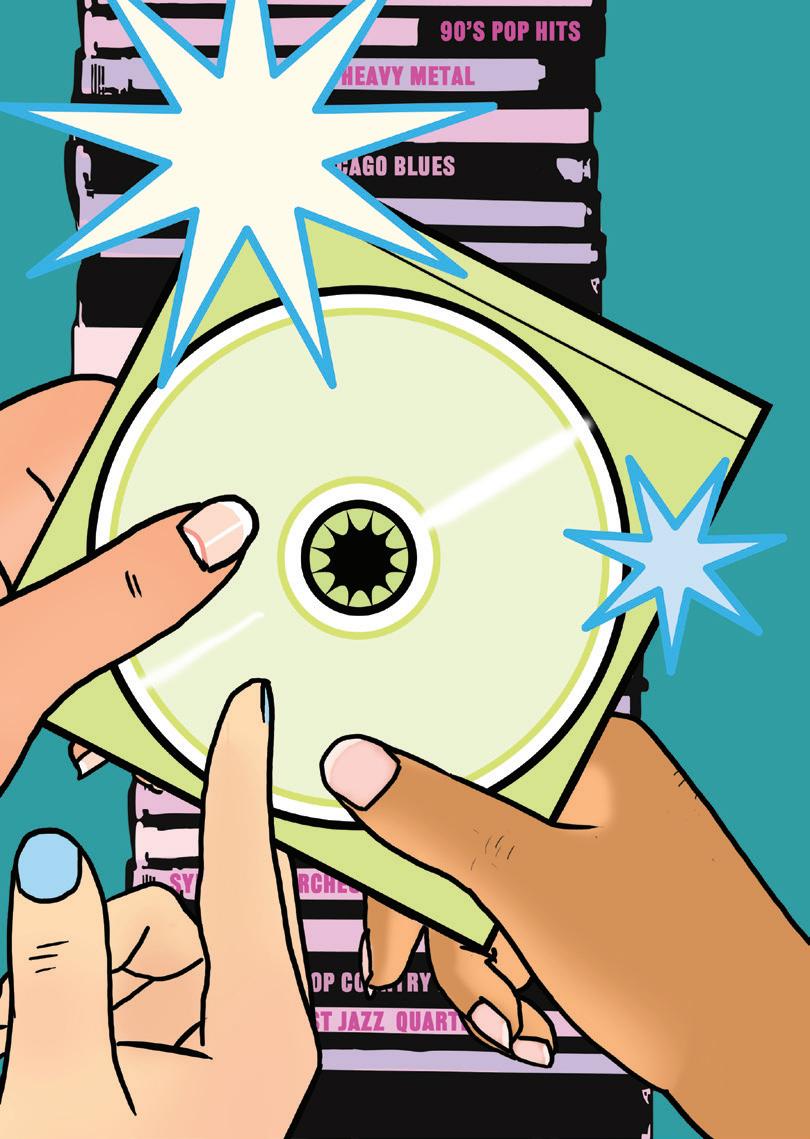




14 Plays of Note Love, Chaos, & Dinner at Teatro ZinZanni and Twel h Night at Oak Park Festival Theatre
16 Cover Story | Renken Drag superstar Shea Couleé joins smallscreen superheroes in Ironheart
18 Q&A Jacqueline Stewart on 20 years of the South Side Home Movie Project
20 Feature | Galil The compact disc isn’t going quietly.
22 The Secret History of Chicago Music Guitarist Byron Gregory played his tasty licks just outside the spotlight.
24 Shows of Note Previews of concerts including Deonte Baker, Natalie Bergman, and Buñuel
26 Gossip Wolf CHIRP mourns a pillar of its volunteer community, the Chosen Few Picnic turns 35, and more.
27 Jobs 27 Services

Drag superstar Shea Couleé’s day off at St. Regis Chicago hotel (@stregischicago). Photo by Drag Files (@dragfi les); creative direction by Drag Files and Shea Couleé (@sheacoulee). Special thanks to St. Regis Chicago.
PUBLISHER AMBER NETTLES
CHIEF OF STAFF ELLEN KAULIG
EDITOR IN CHIEF SALEM COLLO-JULIN
ASSISTANT MANAGING EDITOR
SAVANNAH RAY HUGUELEY
PRODUCTION MANAGER AND STAFF
PHOTOGRAPHER KIRK WILLIAMSON
SENIOR GRAPHIC DESIGNER AMBER HUFF
GRAPHIC DESIGNER AND PHOTO RESEARCHER SHIRA
FRIEDMAN-PARKS
THEATER AND DANCE EDITOR KERRY REID
MUSIC EDITOR PHILIP MONTORO
CULTURE EDITOR: FILM, MEDIA, FOOD AND DRINK TARYN MCFADDEN
CULTURE EDITOR: ART, ARCHITECTURE, BOOKS KERRY CARDOZA
NEWS EDITOR SHAWN MULCAHY
PROJECTS EDITOR JAMIE LUDWIG
DIGITAL EDITOR TYRA NICOLE TRICHE
SENIOR WRITERS LEOR GALIL, DEANNA ISAACS, BEN JORAVSKY, MIKE SULA
FEATURES WRITER KATIE PROUT
SOCIAL JUSTICE REPORTER DEVYN-MARSHALL BROWN (DMB)
STAFF WRITER MICCO CAPORALE
MULTIMEDIA CONTENT PRODUCER SHAWNEE DAY
SOCIAL MEDIA ENGAGEMENT
ASSOCIATE CHARLI RENKEN
VICE PRESIDENT OF PEOPLE AND CULTURE ALIA GRAHAM
DEVELOPMENT MANAGER JOEY MANDEVILLE
DATA ASSOCIATE TATIANA PEREZ
MARKETING ASSOCIATE MAJA STACHNIK
MARKETING ASSOCIATE MICHAEL THOMPSON
SALES REPRESENTATIVE WILL ROGERS
SALES REPRESENTATIVE KELLY BRAUN
MEDIA SALES ASSOCIATE JILLIAN MUELLER
ADVERTISING
ADS@CHICAGOREADER.COM, 312-392-2970 CREATE A CLASSIFIED AD LISTING AT CLASSIFIEDS.CHICAGOREADER.COM
DISTRIBUTION CONCERNS
DISTRIBUTIONISSUES@CHICAGOREADER.COM
READER INSTITUTE FOR COMMUNITY JOURNALISM, INC.
CHAIRPERSON EILEEN RHODES
TREASURER TIMO MARTINEZ
SECRETARY TORRENCE GARDNER
DIRECTORS MONIQUE BRINKMAN-HILL, JULIETTE BUFORD, DANIEL DEVER, MATT DOUBLEDAY, JAKE MIKVA, ROBERT REITER, MARILYNN RUBIO, CHRISTINA CRAWFORD STEED
READER (ISSN 1096-6919) IS PUBLISHED WEEKLY BY THE READER INSTITUTE FOR COMMUNITY JOURNALISM 2930 S. MICHIGAN, SUITE 102 CHICAGO, IL 60616, 312-3922934, CHICAGOREADER.COM
COPYRIGHT © 2025 CHICAGO READER ALL RIGHTS RESERVED. CHICAGO READER, READER, AND REVERSED
Re: “Why resist Lincoln’s queerness?” (on writer-actor Roger Q. Mason’s stage play and film Lavender Men), an interview by Kat Sachs for our June 26 issue (volume 54, number 38)
We’ve all seen our north-side, strapping young Lincoln statue . . . we know what’s up. —Taryn Stickrath-Hutt, via Instagram
Re: “Dennis Rodman’s gay 90s,” by Jack M Silverstein, published in our June 19 issue (volume 54, number 37)
I remember a night he was at Boom Boom Room [a Monday night queer party hosted at former Wicker Park bar Red Dog in the 1990s], hanging with the amazing club kids that ruled the place. I wasn’t into sports culture because I found it so alienating, but we sure thought it was cool that he was there. —Eris Drew, via Instagram
Re: “Monday Night Foodball turns four this summer,” written by Mike Sula and published to chicagoreader.com on June 4
Congrats on four years! And what a rock star lineup to celebrate. Thank you Mike Sula and Frank and Mary’s Tavern for throwing Chicago’s best weekly party. We’re honored to be a part of this, as always. —John Pragalz of Bad Johnny’s Kitchen, via Instagram
Find us on socials:
Facebook and Bluesky: chicagoreader
X: Chicago_Reader
Instagram and Threads: chicago_reader
LinkedIn: chicago-reader
The Chicago Reader accepts comments and letters to the editor of fewer than 400 words for publication consideration.
m letters@chicagoreader.com
The Reader has updated the online version of the Gossip Wolf column originally published for our July 3 issue (volume 54, number 39), specifically within the mention of Midwest Rave Culture Archive founder Aria Pedraza’s mother, Lori Riegler.
This story has been corrected to more accurately describe Riegler’s professional relationship with house music producer and DJ Paul Johnson. She booked him for concerts but did not serve as his manager. v
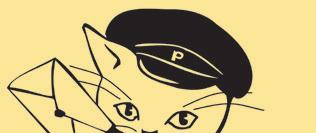




The CPD committed to releasing “merit” promotion lists in 2017. Now the city claims doing so would be an invasion of privacy.
By RACHEL HEIMANN MERCADER, INVISIBLE INSTITUTE AND SAM STECKLOW, INVISIBLE INSTITUTE
This story was copublished by Invisible Institute and the Reader
John Poulos’s past might have prevented him from being hired by the Chicago Police Department—if he had been honest about it. Instead, the lieutenant’s rise through the department’s ranks is emblematic of many of the problems identified by critics of the CPD’s “merit” promotion system. On his initial application to join the CPD, Poulos omitted past arrests he’d gotten expunged. (He later claimed to internal investigators he did not believe the law required him to disclose expunged information.) An early misconduct investigation could have led to his termination in the early 2000s, if bureaucratic errors hadn’t kept it on ice for more than a decade. And he fatally shot two young Black men—in 2013, three years before his promotion to sergeant, and in 2016, shortly after he was promoted. In both cases, the city paid around $1 million related to police misconduct lawsuits.
Any of those individually could have been enough to derail his career. Instead, Poulos kept rising. Records released in 2017 showed that Poulos didn’t make sergeant by passing a competitive exam—the way that most Chicago police supervisors rise through the ranks. Instead, he was a beneficiary of the CPD’s long-controversial “merit” promotion system, in which superiors nominate subordinates for a process intended to recognize the merit of o cers who are not suited to a standardized testing environment.
After the U.S. Department of Justice (DOJ)
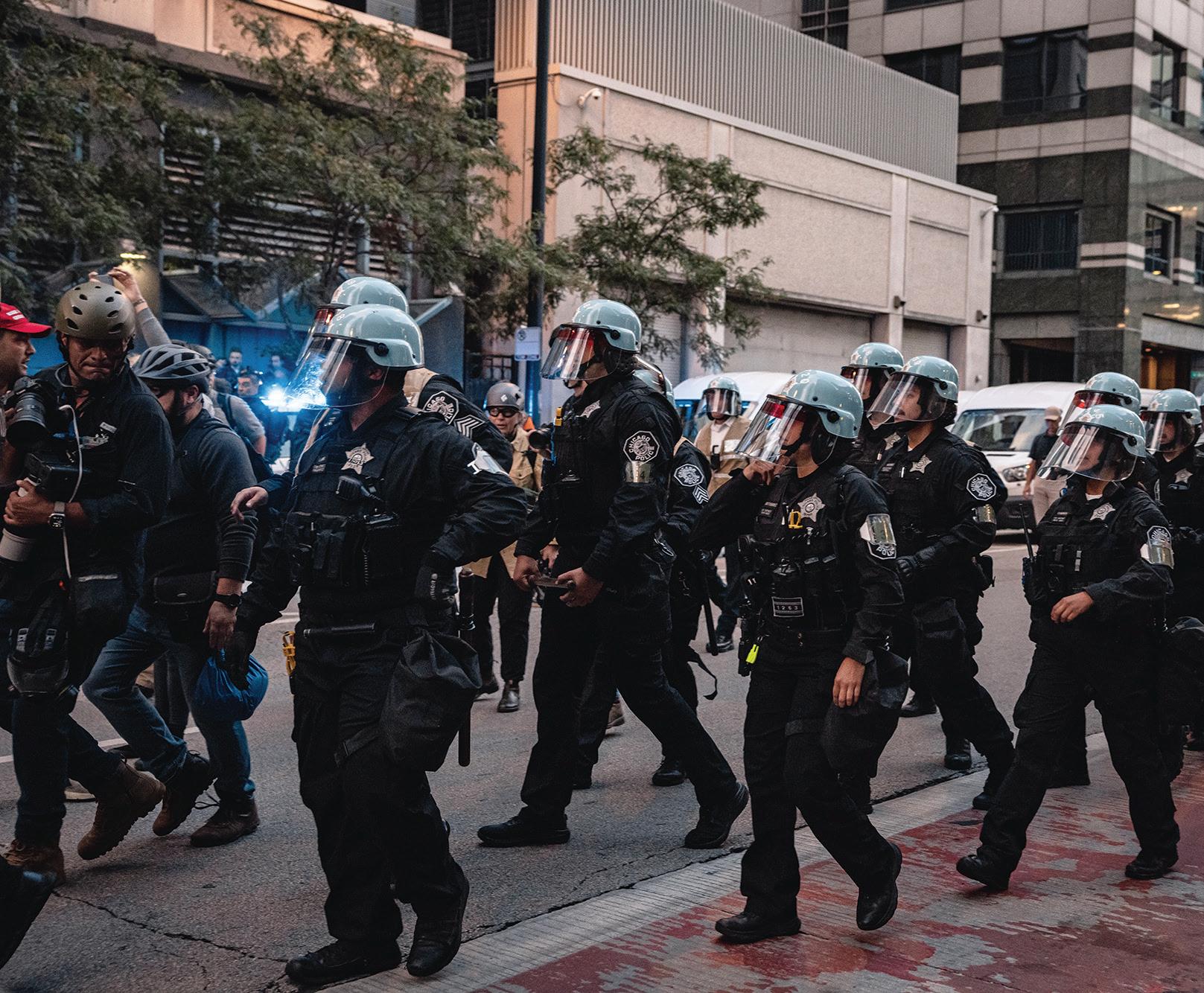
harshly criticized the program in its excoriating 2017 report on CPD misconduct and excessive force— directly referencing Poulos’s promotion— then Chicago police superintendent Eddie Johnson took the unprecedented step of publicly releasing the names of officers who had received merit-based promotions since 2006, along with their nominators.
Johnson hailed the move as a commitment to transparency, pushing back against accusations that the process was shrouded in secrecy. “If I were trying to hide something, if we weren’t being transparent, we wouldn’t even be talking about this,” he said, “because you wouldn’t know who the merit selections were.”
Johnson pledged to continue disclosing this information moving forward. Police spokesperson Anthony Guglielmi doubled down on the commitment, telling the Chicago Sun-Times , “CPD will be identifying those individuals who received a merit-based promotion—not just for sergeant but for all going forward. And we will identify who the nominating members are.”
But the brief window of transparency has slammed shut. After revelations about his 2016 merit promotion to sergeant prompted greater scrutiny, Poulos’s 2024 promotion to lieutenant happened in the dark—because
cers who received controversial “merit” promotions.
the city now claims that the release of records about the manner of an officer’s promotion would be an invasion of their privacy, a claim rejected by public records and civil rights attorneys. The public has no way of knowing whether he received his most recent promotion through the exam or the merit system.
“I see this as a departure in law and practice and policy,” said University of Chicago law professor Craig Futterman. “The public has a legitimate interest in knowing which o cers are promoted and how that process works.”
The 2017 list released by Johnson remains the only one available to the public. In February, Invisible Institute sued the city over its denial of records about merit promotions, which are now held by the city’s O ce of Public Safety Administration (OPSA), created in 2019 under then mayor Lori Lightfoot.
“[O]PSA, the Chicago Police Department, and the [Mayor Brandon] Johnson Administration have a terrible track record of improperly denying Freedom of Information Act requests on important issues of police
accountability,” said Matt Topic, a partner at Loevy and Loevy who is representing Invisible Institute in its lawsuit. “Unfortunately, it often takes lawsuits like this to force them to comply with basic transparency obligations.”
In response, the city has written in court documents that it “denies” Invisible Institute’s claim that “the public has a right to understand the process by which government employees armed by the state are promoted.”
The lawsuit is ongoing.
For most Chicago cops looking to advance through the ranks, the path is through an exam that is notoriously difficult and inconsistently o ered—sometimes only once or twice per decade—that has inspired multiple cheating scandals over the years. For a select few, the alternative path is to be nominated by a department higher-up for the CPD’s merit process.
After being nominated, such o cers are reviewed by a Merit Board made up of additional CPD insiders, including five deputy chiefs

and the head of the OPSA, who serves as a nonvoting secretary. For most of the program’s history, members of the Merit Board couldn’t also nominate officers. That changed under Superintendent Johnson, who only required that they recuse themselves from votes on their nominees.
The city’s human resources and OPSA offices then compile a nomination packet on each nominee, including their complimentary histories and limited disciplinary information from recent years, and the Merit Board interviews some nominees, according to city policies. Merit Board members vote up or down on each nominee and send their results to the superintendent— who has ultimate decision-making power. The superintendent can even select o cers for merit promotions who weren’t put forward by the board at all.
visory potential,” wrote consultants hired to study the CPD’s promotional system in 2020.
In reality, according to the DOJ, many ocers—“minority and non-minority alike”—experienced the merit system as a “reward for cronyism rather than a recognition of excellence.” They tied the system to the city’s longtime traditions of promotions based on “the ‘clout’ you hold in the Department or ‘who you know.’” O cers told federal investigators they felt that some merit promotees were “unqualified to serve as leaders” and had been promoted “merely because those individuals have connections up the chain of command.”
This echoed complaints made by officials with the city’s rank-and-file and sergeants unions as well as the African American Police League, which represented the interests of many Black o cers, as far back as 1995. After Matt Rodriguez, the superintendent at the time, merit promoted 13 sergeants to lieutenant that year, a spurned sergeant sued and won a state appellate court decision blocking the promotions from going forward.
Among those up for a promotion was Peter Dignan, who was at the time facing litigation in a series of cases stemming from his alleged torture of several later-exonerated men as part of his work under notorious Commander Jon Burge. Rodriguez said he was “not aware” of the allegations against Dignan when merit promoting him.
Then mayor Richard M. Daley forged ahead with a plan for merit promotions despite the appellate court decision—again despite litigation and complaints from police unions—a few years later in 1998. Controversy would continue; the sergeants union filed its own Freedom
alternatives, such as merit promotions. He found that officers who were denied the opportunity to take the promotional exam responded by conducting a higher proportion of low-level arrests and seeking roles on controversial tactical teams, likely with the goal of impressing supervisors who can nominate them for merit promotions.
Kim said in an interview that, while it can be interpreted as a positive sign that o cers don’t respond to limited promotional opportunities by simply loafing on the job, it raises serious questions about whether encouraging o cers to conduct a large number of low-level arrests and seek out tactical work as a means of promotion is beneficial to the city. Tactical teams have faced renewed criticism in recent years for their aggressive policing tactics.
He suggested that the CPD could reward community engagement and other e orts in its merit promotions as a way to encourage more o cers to seek out roles and activities besides increased arrests and serving on tactical teams. “Sometimes having alternative response teams through a community engagement may be better, right?” he said. “My guess is that community engagement is not really prized by police officers” when considering promotions.
The merit system also has limits as a means of diversifying CPD leadership, its intended goal. Compared with current statistics that show white men make up 30 percent of the department, 40 percent of merit promotees between 2006 and 2016 were white men, according to a 2016 Sun-Times analysis of department data.
One of those men was John Poulos. That was
“You can lie . . . even shoot unarmed people in the back, and then not only escape discipline, but be rewarded—get promoted—for doing so.”
The merit promotion system was implemented in the mid1990s as a way to increase the representation of women and o cers of color in leadership positions within the CPD, a department whose upper ranks have historically been dominated by white men. It followed two decades of litigation, including from groups representing Black o cers and the DOJ as well as white o cers, asserting discrimination in CPD hiring and promotional practices.
“In consideration of the historical adverse impact that had been observed on minority candidates, the merit process was intended to identify CPD personnel who did not necessarily score well on tests and yet exhibited super-
of Information Act litigation seeking a merit promotion list in 2003. (Long-standing dissatisfaction on the part of rank-and-file o cers with the city’s merit promotion processes notwithstanding, John Catanzara, the president of the city’s main police union, told an Invisible Institute reporter to “F-o !” in response to a request for comment for this story.)
In a 2024 study, Taeho Kim, an economics professor at the University of Toronto, looked at the e ects of the CPD’s infrequently scheduled promotional exams—and how those limited opportunities push officers to seek
ultimately recommended that he be fired in 2007. That recommendation was overturned by Debra Kirby, the head of BIA at the time. Kirby instead pushed for a 60-day suspension over the objections of two other o cials who accused Poulos of “a pattern of deception,” according to reporting by Injustice Watch. Because he was still on medical leave, neither disciplinary action was implemented, and he returned to work in 2010 with the case still technically pending.
Back on the force, Poulos continued to rack up disciplinary actions and uses of deadly force. In 2013, he was reprimanded by the department for accidentally firing his weapon during an arrest. Then, four months after the reprimand, he fatally shot a man while off duty. While returning home from his family’s tavern, Poulos thought he saw Rickey Rozelle, a 28-year-old Black man, trying to break into a building. He fatally shot Rozelle in the back with a revolver owned by his brother after he claimed he thought Rozelle’s chrome wristwatch was a gun. He was cleared by criminal and administrative investigations, but the city eventually settled with Rozelle’s sister for $950,000.
In February 2016, about a year after he was cleared in the Rozelle shooting, Poulos received a merit promotion to sergeant. His promotion took place as protests rocked the city following the November 2015 release of video of the murder of Laquan McDonald by o cer Jason Van Dyke in 2014.
despite Poulos having lied on his application to join the CPD about previous arrests that had been expunged—a violation of CPD policy that was ultimately ignored by o cials, Injustice Watch reported. Then, while on an extended medical leave between 2002 and 2010, he operated a tavern in violation of CPD policies that prohibit cops from owning businesses that sell liquor, the Chicago Tribune reported. After he disclosed his partial ownership of the tavern while applying for medical benefits, the CPD’s Bureau of Internal A airs (BIA) opened an investigation in 2004 and
The timing was not lost on Futterman, the law professor who has worked on several significant civil rights lawsuits against the CPD, including one of the three that resulted in court-ordered reforms to the department. “This is a time when CPD has drawn international attention for covering up o cer Jason Van Dyke’s murder of 17-year-old Laquan McDonald. It’s mind-blowing that CPD leaders thought that it would be a good idea to promote another white male o cer who had shot an unarmed Black man in the back,” he said. “Poulos not just was, but is, kind of the poster child for all that an officer could do without being subject to any accountability. You can lie . . . even shoot unarmed people in the back, and then not only escape discipline, but be rewarded—get promoted—for doing so.”
As with all merit promotees, Poulos was first nominated by a department higher-up. In his case, it was Kevin Navarro, his well-connected commander at the Seventh District in Englewood. Navarro would shortly afterward rise to the rank of first deputy, a post in which
continued from p. 5
he notably received day-or-night phone calls from then mayor Rahm Emanuel on crime issues in the city. City spokespeople later claimed to the Tribune that Navarro would not have known about the previous disciplinary case at the time.
During this time, John Escalante was serving as interim superintendent, after Emanuel fired Garry McCarthy. Escalante, who is now executive director of public safety for Elmhurst University in the west suburbs, did not respond to a request for comment.
Nine months after he received a merit promotion, Poulos shot and killed Kajuan Raye, a Black 19-year-old, during a foot chase in West Englewood. Poulos claimed that Raye pointed a gun at him, but an expert retained by Raye’s attorneys in a civil rights lawsuit brought by his mother eventually acknowledged the gun had remained in Raye’s jacket pocket.
Johnson stripped Poulos of his police powers immediately after the shooting, pointing to “concerns about this incident.” That was when BIA rediscovered the old, unresolved case over his tavern ownership and expunged arrests. CPD leadership moved to fire him in July 2017, 16 years after he first deceived the department and six months after DOJ investigators called out his merit promotion as a failure of CPD’s internal systems.
But it was too late. The delays meant the case wouldn’t hold up. Poulos stayed on the force, and the city’s Civilian Office of Police Accountability (COPA) cleared him of wrongdoing in the Raye shooting. (A jury awarded Raye’s family $1 million in a civil lawsuit in 2020.)
A few months after his tavern ownership disciplinary case was dropped by the Chicago Police Board in 2018, he was assigned to the CPD office that certifies eligibility for what are known as U visas, which are issued to immigrants who are the victim of a crime. There, he and another sergeant with a history of excessive force allegations were responsible for a disproportionate number of U visa denials, according to Injustice Watch, potentially in violation of federal standards and state law, and prompting an investigation by Illinois Attorney General Kwame Raoul.
In the face of this string of misconduct and bad press, Poulos, who graduated from law school while on medical leave, ran for a Cook County judgeship in 2024. “This background that adversely goes against [his] fundamental credibility should not be hanging over a judge under any circumstances,” former Chicago
inspector general Joe Ferguson told Injustice Watch.
Poulos, who did not respond to a voice mail seeking comment for this story, came in fourth of four candidates, but he remains on the police force despite the long-documented allegations concerning his credibility and has never been listed as one of the officers that the Cook County State’s Attorney’s O ce discloses credibility questions about to defense attorneys.
In fact, even before his losing judicial campaign, he was quietly promoted to lieutenant.
Despite the harsh criticism from the DOJ, in addition to critiques from Ferguson and the Police Accountability Task Force chaired by then police board president Lori Lightfoot in the wake of Laquan McDonald video release, the merit process continued apace after 2017. That’s because the CPD’s hiring plan, created in 2014, set out that up to 30 percent of each round of sergeants and lieutenants, and 20 percent of detectives, can be merit promotions. Still, the plan leaves the decision of whether to accept a merit promotion nomination entirely in the hands of the superintendent.
Many officers— “minority and non-minority alike”— experienced the merit system as a “reward for cronyism rather than a recognition of excellence.”
In 2019, then interim superintendent Charlie Beck used his discretion to stop making merit promotions altogether, aligning with calls for reform as well as long-standing requests by the Fraternal Order of Police Lodge 7, which represents rank-and-file Chicago cops. As mayor, Lightfoot stood by Beck’s decision, calling the merit system “illegitimate.”
Around the same time, Lightfoot’s administration shu ed some responsibilities of the CPD, including hiring and promotions, into the new Office of Public Safety Administration, with the stated goal of “streamlining” services to save money. (An analysis by the Better Government Association’s policy team two years in found that it ended up costing the city more
than it saved—a trend that’s continued.)
Just months later, in April 2020, Beck’s move under Lightfoot to legitimize the CPD’s promotions would begin to unravel as Lightfoot’s handpicked choice for the permanent superintendent position, former Dallas police chief David Brown, said during his confirmation hearing before the City Council that he would be “aggressively pursuing a replacement for merit” promotions. In July 2021, Brown officially reinstated the program.
A list obtained by WGN-TV that September showed controversial supervisors continued to have an outsize role in nominating merit promotees. Those supervisors included Anthony Escamilla, a former commander whom Beck demoted to captain for directing on-duty officers to babysit his son, who has a disability. (Escamilla claimed at the time that his teenage son was volunteering in the community policing department.)

mother alleged in a lawsuit that the shooting “could not” have happened as Rubald, who shot Winford while seated in his squad car, claimed it did. A jury sided in favor of the city and o cers in 2016.
Current superintendent Larry Snelling supports merit promotions, telling the Sun-Times in 2023, “To be totally honest, I would like to see the entire promotional process changed to take merit into account for promotion and not just a test. This will give everybody a great opportunity of being promoted.”
Snelling received two merit promotions between 2010 and 2019, contributing to his meteoric rise through the ranks.
Though no official merit promotion lists have been released by the city in eight years, one quasi news source has published a steady stream of leaked lists every few months: an anonymous blog called Second City Cop.
The lists published by the site show a continuation of old trends. Zachary Rubald was promoted to sergeant in 2019, according to the blog. In 2008, Rubald killed Martinez Winford, a Black 16-year-old, in a shooting. Winford’s
After his merit promotion, Rubald was among roughly 50 o cers COPA recommended for suspension or termination for alleged misconduct during the nationwide protests following the 2020 murder of George Floyd. He was suspended for one month.
In one incident caught on video, the recently promoted Rubald stood by as officer Richard Bankus beat a protester with a baton, appearing to strike the person in the head, as Invisible Institute and the Reader reported. Baton strikes to the head are considered deadly force and are prohibited except in rare circumstances. Rubald never intervened or reported the misconduct, which investigators later found to be “inexcusable, particularly for someone of the sergeant’s rank, position, and authority.”
Another officer who received a merit promotion in recent years, according to the lists published by Second City Cop, is Baneond Chinchilla, who CBS Chicago reported in 2020 provided incomplete search warrant a davits to Cook County judges, including one resulting in a 2018 no-knock raid at the wrong house

that had a family with small children. A civil case arising from the incident settled for $91,500, city records show. Chinchilla was promoted to sergeant last year, the published records show.
The person who responded to the listed email address for the Second City Cop blog said they believe the lists that the photos in the blog posts are legitimate, writing, “the department publishes the lists in the Administrative Fax Network divided up into a ‘merit’ list and a ‘rank order’ list. readers send them to us and we post them. it’s a department generated publication, so the veracity isn’t in question and the secrecy isn’t the list itself. “what is in question and what has never been addressed is ‘what qualifications are needed [to] place someone on the ‘merit’ list. one might think that in order to qualify for the ‘merit’ procedure, the department would post the necessary or desirable traits the promotional board would look for in a candidate, so as to get the best and brightest and give everyone a fair shot,” the person continued. “someone thinking that would be—to put it politely—a moron.”
OPSA executive director Era Patterson declined to confirm whether Rubald and Chinchilla were merit promotions, citing the pending FOIA litigation.
Her predecessor, interim executive director Frank Lindbloom, previously said when asked
for comment that the agency is “certainly not attempting to hinder transparency efforts,” but he emphasized its obligation to protect employee privacy and maintain the integrity of the hiring process, including the CPD’s merit system, by limiting what is shared publicly. This is perhaps in keeping with city ocials’ wavering attitudes toward transparency around the merit promotion process since the beginning; even as they released the one list in 2017, CPD o cials seemed half-hearted in their step toward transparency and refused to release two prior merit promotion lists because they came before Johnson’s decision.
Lindbloom added he was “not aware of any instance whereby [O]PSA or CPD has released lists associated with CPD’s merit process.” When asked in a follow-up whether he was aware that then superintendent Johnson released a merit list in 2017, Lindbloom did not respond. Patterson, a former chief of sta to Cook County public defender Sharone Mitchell Jr. who was named as Lindbloom’s permanent replacement in June, declined to clarify Lindbloom’s inaccurate statements, citing the pending FOIA lawsuit.
But the consultants hired by the city to evaluate the CPD’s promotional process have weighed in on another question: whether merit promotions should exist at all. In a December 2023 report obtained by Invisible Institute and the Reader under state public records laws—which hasn’t been previously published or reported on—the firm DCI recommended that the city “discontinue the merit process” or at least make substantial changes, including reducing the proportion of o cers promoted to “a maximum of 10-20%,” allowing officers to nominate themselves rather than requiring nomination from a supervisor, and setting “some minimum level of performance” to be considered for a merit promotion. The consultants cited the “overwhelmingly negative perception of this process throughout the CPD.”
In an undated planning document released by the city law department, city o cials wrote that they were “ready to start” implementing that recommendation—without specifying whether they intend to discontinue or change the program—and that it should take one to two years.
Requests for comment sent to the CPD and city law department about whether they intend to discontinue or significantly change the merit program went ignored. v
m letters@chicagoreader.com


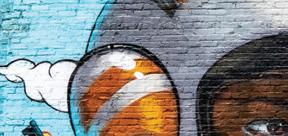





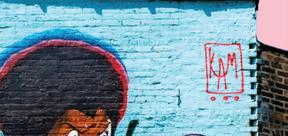

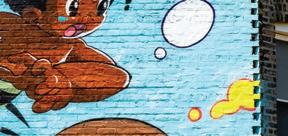
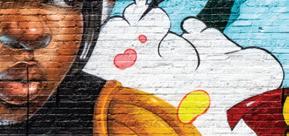


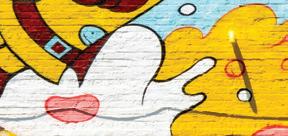











Showing us how insurance and education can create opportunities and transform legacy
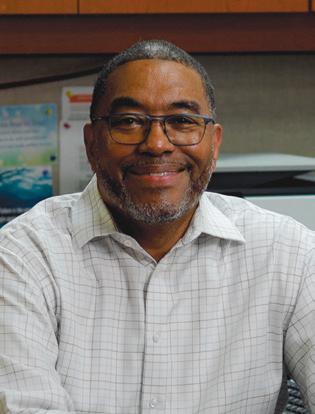
Like a good neighbor, Charles Cathey Jr. is there. Before opening his own agency on the Southeast Side in 2007, Cathey began his career in the insurance industry in 1984 with an internship that showed him how the sector can transform and upli communities. From that point on, Cathey was not only committed to providing quality service but also generating job opportunities and helping others in creating their legacy.
For most folks, our insurance policy is typically a piece of paper that is filed away as a “just in case” precaution, but Cathey is dedicated to educating his clientele to ensure they understand and best utilize their coverage. Prior to growing roots with his own firm in the Avalon Park neighborhood, Cathey grew up in Morgan Park before bouncing around the Chicagoland area and the midwest. With his exceptional experience in a variety of specialties within the insurance industry, such as disaster support and customer satisfaction, Cathey’s relationships with those he serves o en evolve from handshakes to hugs.
As Cathey put in more years to his cra , he recognized that a significant component of having peace of mind when it comes to filing claims is related to access to resources. He proudly stated, “There is no success without succession.” With that mindset and with partnerships with notable institutions like Chicago Public Schools and Chicago State University, Cathey personifies his devotion to fostering an educational, professional environment for the next generation.
Similar to his neighboring businesses, Cathey is interested in continuing the renaissance of Chicago’s South Side. Not only does his State Farm show up at community events, but they actively contribute to the area’s betterment by being active stewards of their business corridor. Cathey and his team’s simple yet intentional practices are composed of care, hopefully acting as a catalyst for continued change within and beyond the area.
From the Southeast Side, throughout all of Illinois, and over to the state of Indiana, the Charles Cathey State Farm team is proud to nourish the community with a sense of security and is here to stay to see their seeds flourish. Reach out to Charles and his phenomenal team, Fatima, Renia, Alma, Cynthia, and Janaine, for more information!


CHARLES CATHEY STATE FARM INSURANCE AGENCY 1652 E. 87th Mon-Thu 9 AM to 5:30 PM; Fridays 9 AM to 5 PM; Saturday by appointment only | Instagram @charlesismysfagent charlescatheyjr.com | 773-978-5904 Read now


Chicago hasn’t sustained optimum conditions for winter sports in the last three years. Is this the end of an era?
By CAROL LARSON
Summer in Chicago is a time when the lakefront buzzes, patios are full, and sunscreen replaces layers of clothing. But with the longer and warmer days, I find myself thinking of snow. I recently noticed that my cross-country skis have been collecting dust in the garage for the past three years. This is not because I’ve lost interest in skiing—there simply hasn’t been enough snow to successfully ski.
I am sensitive to this loss, because cross-country skiing is a meditative ritual for me, especially on quiet mornings. I glide through the forest preserves, soothed by whispering skis and the rise and fall of my breath. However, to cross-country ski optimally, one needs at least four inches of snow. For three winters in a row, there hasn’t been enough snow in the Chicago area for me to ski. The first year, I considered it an unusual case of bad luck. The second year, a coincidence. By the third, I found myself asking: Are the Chicago winters I know slipping away?
followed by hours of sledding on a hill near our home.
My siblings and I lived outdoors on snowy days. We rolled snowballs into towering snowmen and built forts that were large enough to shelter us. We made snow angels and hurled snowballs at classmates on the walk home from school. We slid across icy sidewalks and endured wet socks when our boots disap-
ditions. When I reflect on those days, I realize that this is when it most felt like home.
For many adults, Chicago winters are stressful for a variety of reasons, including power outages, dangerous driving conditions, and empty store shelves before storms. We all have our stories of winter su ering. One of my car accidents happened when a driver lost control on black ice and slid into my vehicle. I’ve lived in neighborhoods where people spent hours digging out their cars, then fiercely fought over their curbside territories, which were marked by old chairs or crates. One winter, I wrapped myself in heavy layers of clothing to brave 80-below wind chills in search of a store with firewood. I remember staying up all night with worry, continuously feeding wood into the fireplace to keep the pipes from freezing.
The great blizzards are a part of our Chicago folklore. My husband’s grandmother still

Love them or hate them, Chicago winters shape who we are, and that begins in childhood. When I was young, the first significant snow cover of the season was always greeted with excitement and awe. Someone would shout, “Look, it’s snowing!” and then we would run to the window to watch fall’s dull, earthy landscape magically transform into a brilliant white.
Before the digital age and e-learning, snow days were treated like unexpected holidays. We would track the forecasts and, on bad weather days, anxiously follow the scrolling ticker on the morning news or listen to the lists of school closures reported on the radio. When the phone would finally ring and someone would confirm, “No school,” my siblings and I would jump and shriek with joy. For us, it was a day of watching morning cartoons
peared into knee-deep drifts. We stuck out our tongues to catch snowflakes—despite adults warning us not to—and laced up ice skates for a bruising experience on a local pond.
The biting winds often stung our faces, sometimes forcing us to shield them by walking backwards. When we finally returned to the warmth of our homes, our cheeks and fingers were numb, noses bright red, and hair matted from knitted caps. On the coldest days, my mom baked bread or made spaghetti sauce that simmered on the range for hours. Those aromas wafted around us like a blanket; the kitchen warm from the stove, the evening news murmuring on the television in the background.
I felt safe and sheltered from the harsh con-
to the parks, wear shorts for the first time of the year, or jump on motorcycles that roar back to life.
I believe that embracing both the magic and the misery of winter is part of what makes us Chicagoans. I recently went on vacation, and after learning that I am from the Chicago area, a woman scrunched her face and said, “I don’t know how you can stand that cold!” “Yes,” I replied. “You have to be tough to live there.” All of this might be changing. Despite occasional cold snaps, it’s clear Chicago is experiencing the effects of climate change. Several research institutions, including the National Centers for Environmental Information (as covered by Crain’s Chicago Business in January), have reported a decline in snowfall and ice cover in the Chicago area. Scientists have warned that this warming is altering our environment. I now see these changes in the form of hummingbirds in my yard, heatwaves in June, wildfire air pollution alerts, and dust storms. And, for the third year in a row, I was unable to ski.
Beyond the science lies something deeper—a quieter grief marked by my untouched skis in the garage. I find myself wondering what other changes will follow. Through this slow erosion of winter, I am confronting a new reality.
In a 2022 article in the Atlantic , writer Madeline Ostrander described an emotion some of us are experiencing because of climate change: solastalgia. Solastalgia, a word coined by scholar Glenn Albrecht, is the distress we feel when our home environments change in ways that start to feel different from home. It can be characterized by feelings of dread, existential angst, grief, disorientation, or homesickness.
talks about the 1967 blizzard. She pulled a sled through snowdrifts to get groceries after 23 inches of snow and ice had pummeled the landscape.
My most vivid memory is 2011’s Groundhog Day blizzard, when winds gusted to 60 mph and whiteout conditions stranded cars on Lake Shore Drive. We were lucky and made it home before the worst of the storm. Others weren’t as fortunate. Emergency crews had to rescue people stuck in vehicles, some running out of gas and fearing for their lives.
But these harsh experiences transition into states of jubilation once spring arrives. Chicagoans come out of hibernation en masse on the first warm sunny day, as if a spell is broken. This euphoria can be witnessed as people flock
If I am honest with myself, I think that solastalgia describes what I’m feeling. My longing for those wintery days is not solely about skiing or my childhood love for snow. I am mourning the loss of a more predictable world and feel anxious about what the future holds. In this city, some of our shared hardships and joys have been shaped by the cold. The winter I know is fading. The home that I know is changing. And as it does, I can’t help but wonder, how will we change along with it? What will be the new winter stories of the next generation of Chicagoans?
Carol Larson, Ph.D., is a lifelong Chicagoan and an educational psychologist. v
m letters@chicagoreader.com
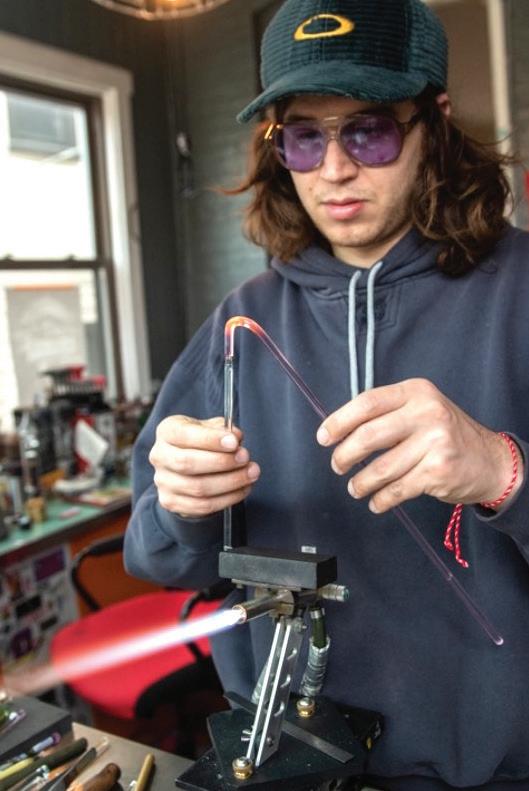
By KERRY CARDOZA

Tucked behind Sawhorse gallery in Belmont Gardens—just west of Logan Square—Henry Gross makes tiny marvels out of glass. A carafe and cup set with an alien-green ring around them. An impossibly delicate translucent lavender handbell. A palm-sized perfume dauber. And countless star- and plus-shaped pendants in an array of colors.
Gross’s practice probably isn’t what you’d imagine when you think about glassblowing, where typically a team of people works with a large furnace of molten glass. Gross works on a smaller scale, using oxygen propane torches to manipulate rods and tubes of glass; often he isn’t blowing the glass at all.
“I do feel like glassblowing is a pretty misleading term,” he said. “It’s just kind of the coolest aspect of it, but really what you’re doing is selective heating and cooling, and manipulating and tooling, but [that has] less of a ring [to it].”
He works primarily with borosilicate glass, which is what Pyrex products are made of; it is more resistant to temperature change. “Any cup or bottle you’re gonna find is some type of soda lime glass. And, as most people know, you pour boiling water in soda lime glass, you risk breaking it, but borosilicate is completely fine with boiling, freezing, anything like that. That makes it a lot easier for me to work with. It’s way more forgiving.”
Gross, who grew up in Lincoln Square, first got bit by the glassblowing bug when he was 14 and took a glass-bead making class at Lill-
street Art Center. “They weren’t set up to do any sort of glassblowing, just what are called Hot Head torches, which is like a propane canister and a flame coming out of that—very basic, loud, hot,” he said. “I was kind of enamored by the fact that it was so hard. I was really surprised at how much I had to try to actually get a simple, round bead. And it was hot, it was dangerous, it was all these things that I thought were really interesting.”
The experience left an impression. “I just kept thinking about glass after that,” he said. “I have all these beads from that class that I would just look at.” There weren’t many other glassblowing opportunities around for kids under 18, though eventually he took some classes at the now-defunct Everlasting Fire Studio. He did a brief stint at Detroit’s College for Creative Studies before realizing art school wasn’t a good fit. So he returned home to Chicago and went to trade school for welding, eventually finding work in a bronze foundry and glass-casting house.
Around that time, he also became acquainted with the folks at the East Garfield Park ceramics and glassblowing studio Firebird Community Arts, where he worked for a few years. (He still volunteers there once a week.)
In his spare time, he was slowly acquiring glassblowing materials for his own purposes—first working out of a smoke shop, then setting up a small home studio where he’d experiment making little glass chains. “That was my first time having my own setup. So I just put more money into that. . . . But then,
star from. I want it to be flat. I want it to be the same width. I want the middle to be perfectly round. I want the points to kind of not be perfect, but as good as I can get them. And then after that, I knock it o the punty [the handle used to manipulate the glass],” he said. Then it goes in the kiln to ensure it cools at a uniform rate.
obviously, I overgrew it really quickly.”
He’s been in his current studio since the start of this year. It’s compact and wellorganized—housing a complex oxygen system, a lathe, a square-foot tabletop kiln, and a propane setup with various hand torches.
Though browsing through Gross’s website, which he updates monthly, or his portfolio on Instagram might make your jaw drop—the precision of an egg cup, the perfection of a glass clothespin—he said he’s just starting to get to a point where he can make the items he envisions. “For so long, I would just kind of let the glass dictate what it wants to be and let it turn into something,” he said. “But a lot of times I’m inspired just by simple, readily available things, images that repeat.” He makes a lot of small star pendants—he’s sold almost two thousand so far. The idea for the stars evolved from the chain links he was making at his home studio.
He can create a star pendant in about 15 minutes. He starts by choosing one or multiple colors (some are unique color combinations made from scraps of previous projects). Then he turns on his bench-mounted torch and starts pulling out a piece of glass rod to make it thinner. He bends that into a circle. Then he’ll heat up the glass again and start pulling out points to a taper, squishing them flat as he goes. After switching hands so he can make all five points, he melts it all to make sure it’s smooth and thus not at risk of cracking.
In 2021, Gross showed a selection of everyday items at the Logan Square boutique Tusk. He rendered in glass a box of screws, (nonfunctional) lighters, a spatula, a set of measuring spoons, a basket with a clasp. “I actually sold things that I wasn’t expecting to. It was really great,” he said. Since then, Gross has sold other items at Tusk, and he credits Mary Eleanor Wallace, who runs the shop, with helping his business get to where it is today. “I would not be here right now if it weren’t for her supporting me and the amount of people that have found me through her store—I’m very thankful for it all.”
Last September, Gross did a live distilling in the storefront windows of Tusk. He made a coil condenser and an oil separator and modified a flask and a beaker to distill sage and eucalyptus. He gave out the scented hydrosol—the water-based byproduct of the distilling process. “That was super fun to do live,” he said. He hopes to learn more about distilling and also looks forward to other commissions and artist projects. He’s currently fabricating a gorgeous, tiny perfume sampler with glass daubers topped with petite flowers and some small perfume bottles for a scent that Wallace is working on for Tusk. “I want to get more into fabrication for other artists, too,” he said. “It really can be so refreshing to work with people when I’m so used to just working alone.”

As far as materials go, glass is quite aesthetically pleasing on its own. “You really could just make the simplest object out of glass, and it would be beautiful, but to kind of be able to understand how to use the glass is not an easy task,” Gross said. He supposes that makes him a craftsperson and not an artist, though when it comes to the minute precision and ingenious ideas of Gross Glass, the distinction seems irrelevant. v
“There’s so many angles I have to look at the
By ANCA L. SZILÁGYI
“Who would lock up a three-yearold?” This is the repeated refrain in the first chapter of Together in Manzanar: The True Story of a Japanese Jewish Family in an American Concentration Camp by Tracy Slater. Elaine Buchman Yoneda—the daughter of Jewish immigrants who fled pogroms in Eastern Europe and the wife of Karl Yoneda, a Japanese American man with parents in Hiroshima—faces an impossible choice. Anyone with “a drop of Japanese blood” was to report for “evacuation” on March 30, 1942.
Because Elaine was white, she was told repeatedly by authorities that she didn’t have
to accompany her son. The cruel absurdity of sending away a young child on his own did not seem to occur to anyone else. Karl had gone ahead to Manzanar, the camp, after promises that the first volunteers to help build it would be rewarded by having their families be the last “evacuated”; it did not help. Elaine forced her way into Manzanar to safeguard her son. She signed a document saying she would be “as if Japanese.”
Woven together from oral histories, diaries, interviews, newspapers, and archives, Slater tells the story of a California family whose gumption in the face of impossible dilemmas is important to consider. The Yonedas were





already activists before the war, working as labor organizers. Elaine was not afraid to advocate for herself and her family, a quality that came with its own risks. Karl was vehemently anti-imperialist and tried unsuccessfully to enlist before the incarceration, though he eventually joined. Both believed it was more important to win the war against fascist powers than to fight the incarceration itself and feared that the camps would be deadlier if the United States lost.

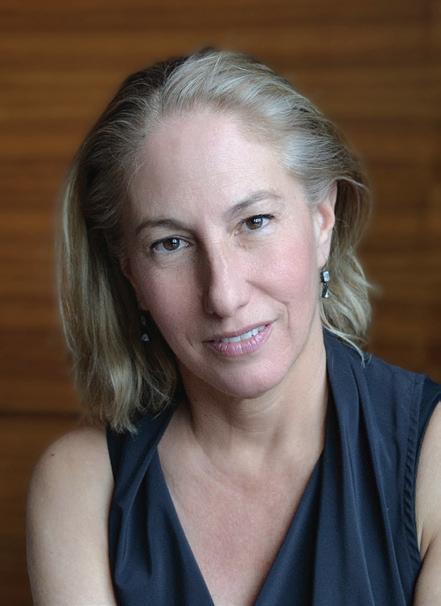
The poor conditions in the camp were many. The desert dust endangered their son, Tommy, who suffered from asthma. The heat could easily rise above one hundred degrees. Lack of insulation made the cold di cult. Wages for work never materialized as promised. Families slept in barracks with little privacy. White sta were given better food and had access to more hygienic facilities.
These problems agitated unrest. ProJapanese nationalists within the camp threatened those helping with the war e ort. Elaine worked to make camouflage nets. At one point, she was attacked with rocks in front of Tommy. And, it seemed, one of the men who attacked her had shaved his mustache so that it would resemble Hitler’s. Another time, when Karl had left the camp to help on a farm in another state while farm laborers fought in the war, a riot broke out, and Elaine fled with Tommy to an administration building for protection. Others who’d helped with the war e ort were
already there; an administrator who she’d butt heads with frequently over camp conditions had “forgotten” about her.
Slater’s book offers much needed context beyond the Yonedas’ compelling story: how the United States government arrived at this abhorrent policy, how an internal rebuttal was silenced and hidden away, instances of other interracial families at other camps, and the attempt to erase this history almost as soon as the camps were closed.
As I browsed the photographs accompanying this history, particularly those from the National Archives and the Library of Congress, I worried: How many of these artifacts would be preserved, given the flurry of erasures under the current administration? The unjust incarceration of Japanese and Japanese American people was a moment in U.S. history I knew little about. It would have felt necessary before we were in the current moment. Now it is urgent. v
TRANSILIENCE: A TRANS PRIDE FESTIVAL
Thu 7/ 10 6 - 8 PM Humboldt Park, 1440 N. Humboldt (indoors), Fri 7/ 11 5 -7 PM Hamilton Park, 513 W. 72nd St. (outdoors), Sat 7/ 12 4:30 - 8 :30 PM Gill Park, 825 W. Sheridan (outdoors); see genderfucked.org/trans-pride for complete schedule and information, free, all ages
Gender Fucked Productions brings a family-friendly showcase to city parks.
By KIMZYN CAMPBELL
Just as Pride month is fading into a summer haze, a new festival is on the horizon that celebrates trans excellence in Chicago. Transilience: A Trans Pride Festival will take place over three days (July 10–12) in three separate geographical locations, bringing a grassroots energy to the thriving queer scene all over the city.
Transilience is the brainchild of Dawn Heilung, co-artistic director and co-executive director at Gender Fucked Productions (GFP) and producer of Transilience; Moore Kelly, producer at GFP; and Cameron Applewhite, producer of GFP’s T4T Open Mics. The festival promises to provide a variety of entertainment and activities, including circus, drag, dance, musical performance, puppets, stand-up comedy, live painting, and flow arts.
Gender Fucked Productions celebrated its third year of operations in February and has been steadily building a solid arts ecosystem by o ering community events and activities that reflect their vision of a world where trans and nonbinary artists can create art that pushes beyond any binaries. Heilung explains, “I want Gender Fucked . . . to be a beacon of hope and light for any trans folks across the country that think they don’t deserve a place onstage or even a place to be alive. So I hope that they see things like this and they’re like, ‘Wait, that’s so cool. I want to be there. I want to be a part of that. This inspires me to make my own art and artistic practice here.’”
Previous and ongoing events include June’s Trans Scribe: A New Works Festival, the popular Queer Dance Freakout (which producer
Kelly says is designed to change the bounds of what dancing and theater can look like), and in the summer, regular meetups around the lake called They Beach.
But Transilience: A Trans Pride Festival has been a big dream at GFP since the beginning, according to Heilung, and now, thanks to the Chicago Park District’s Night Out in the Parks, they can o er this event to Chicagoans. It is free and open to all ages, and offers access rain or shine in its outdoor and backup venues at three parks locations: Thursday, July 10, at Humboldt Park; Friday, July 11, at Hamilton Park; and Saturday, July 12, at Gill Park.
“It was very important for us to be able to be in di erent locations in the city—and not the Loop—to be in the actual neighborhoods. So each day that you go to will be a spotlight on the folks who are there, representing their neighborhoods,” says Kelly. “Trans people can exist anywhere. They’re not all just on the north side. They’re also on the west and the south and everywhere you look. If you just look hard enough,” they add.
One of the best parts about working with GFP, in Kelly’s experience, “is seeing di erent trans people, especially artists, find ways to collaborate with one another and skill-share and build each other up and find their own family within the friend group. I like to see that we can all find our place and grow together, and that’s the most beautiful thing.”
Regarding the festival lineup of performances, Heilung is ready to hype it up. “We have some theater for young audiences, some comedy. We have hyperpop musicians along with death metalcore musicians. We have experimental performance art. We have a repurposed fashion show.” They emphasize, “We wanted to make sure that this festival was not like every other street festival in Chicago and a place where you’re like, ‘Whoa, I didn’t think of that as something that could be live performance!’ And then it is, and it’s exciting.”
The lineup is huge but warrants a sampling.
At Humboldt Park on Thursday, audiences can enjoy performances from the Puppetqueers; singer Jennifer Femme; artist and drag performer Odette Stout; dance artist and improviser Dani Oblitas; producer, singer, and performer Koa Love; and two-person comedy team Something Like a Brother (SLAB), featuring Nathan Hatfield and Eryn Ra erty.
At Hamilton Park on Friday, the lineup includes DJ, producer, and promoter Certified Scru an; comedian Gwen Rose; percussionist Alaska Jules; deathcore band Curse Dealer; drag artists Koda Pendants and drag kings
from the Haus of Wonder series; and GFP’s Queer Dance Freakout.
Finally, on Saturday at Gill Park, there is a packed lineup of performances from (among others) Chicago’s Trans Voices Cabaret; singer/songwriter may5a; musician Evren Page; queer and family-friendly musical circus artists Maria Tate and Shelley Miller in The Amazing Adventures of 2NBs!; storyteller Chi Williams; and comedian/therapist Delilah Orizaba. The festival closes out with a musical performance by Chicago Reader social justice reporter Devyn-Marshall Brown of DMB the Etymology.
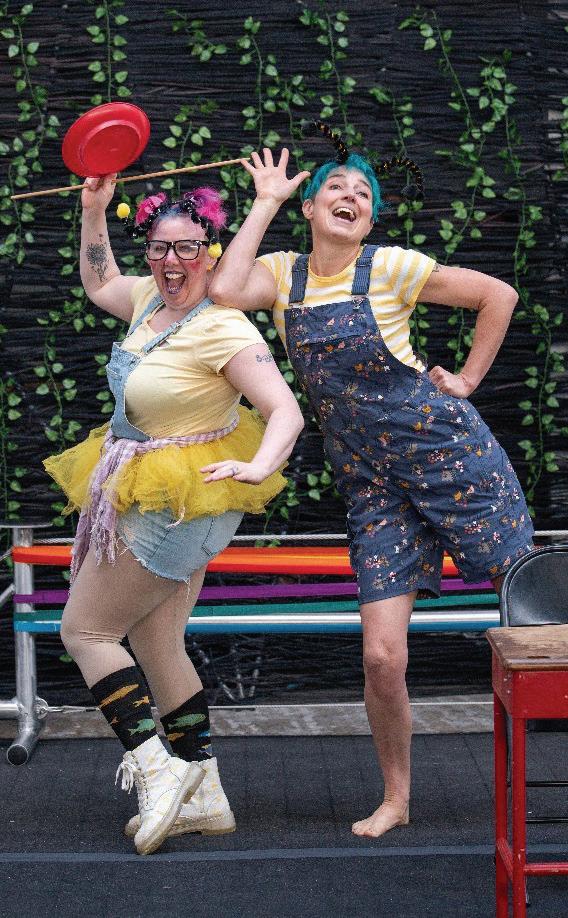
Although the fest is free, anyone looking to support GFP and enjoy a night out after a day in the park might consider attending the afterparty on Saturday, July 12 (for 21+) at Bookclub (a Black, women, and queer-owned space at 2871 N. Lincoln), featuring music by New Goo, Nazz. irl, MaryMary!, Future Nest, and Guesst. Besides performances, there will be a variety of queer and trans businesses, nonprofits, and social organizations present during the festival, so Heilung says, “Bring your cash, honey! Tip the performers. Pay the artists that are vending their materials. Support local organizations.”
Some vendors and organizations visitors will encounter include Pride Co ee Roasters, Camp Stardust Midwest (which provides overnight
camps for queer and trans youth), and abortion fund Midwest Access Coalition.
GFP hopes to make this an annual event, but their hopes go even deeper, says Heilung, since this event is open to all people, regardless of gender or sexual orientation. “What I hope that those folks get from attending this is just a wider expansiveness of who they could be, what the world can be, and what is possible for the gender binary.”
But why is the time right now? According to Trans Legislation Tracker, there are currently 947 bills attacking trans rights in 49 U.S. states, with attempts to block basic
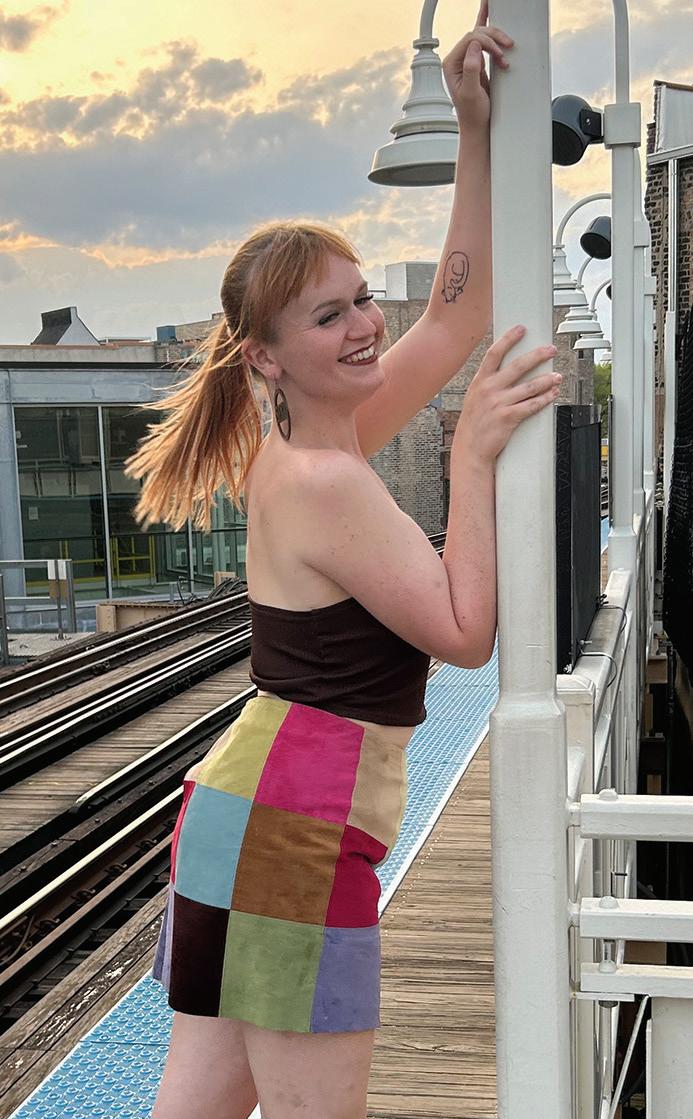
health care, education, legal recognition, and the right to exist publicly. What better time to o er the world transilience, and to speak up and show up for a thriving community, and to celebrate the many ways in which trans people impact the world and the arts?
Heilung says, “Chicago is a sanctuary city of sorts for trans folks, where people come for gender-a rming health care, for community, for safe places to perform and be out as themselves. And we have to broadcast that, right? Spaces like this will exist in exuberance throughout the summer, and they will exist throughout the year too.” v
m letters@chicagoreader.com
The festival collaborates with Northwestern University in this year’s exploration of multidisciplinary storytelling.
By KERRY REID

Founded in 2012 by theater director
Julieanne Ehre as a celebration of multidisciplinary work, Pivot Arts held its first festival in May 2013 with the theme of “Reigniting the Vaudeville Era in Uptown and Edgewater,” featuring artists like Mucca Pazza, Manual Cinema, and Molly Shanahan/Mad Shak. The next year, it focused on the theme of “Art Meets Science.” By 2016, the festival had moved away from specific themes but still o ered an enticing sampler platter of work by local, national, and international artists over the years.
Ehre was inspired by Austin’s Fusebox Festival, which began in 2005 as a showcase of performances that cut across genres and styles. Pivot Arts kept that spirit going even through the pandemic by offering digital shows and streaming discussions with artists in 2020, then reconceptualized the return of the live festival in 2021 with an eye on hygiene protocols. Much of the work over the years was site-specific, using locations throughout
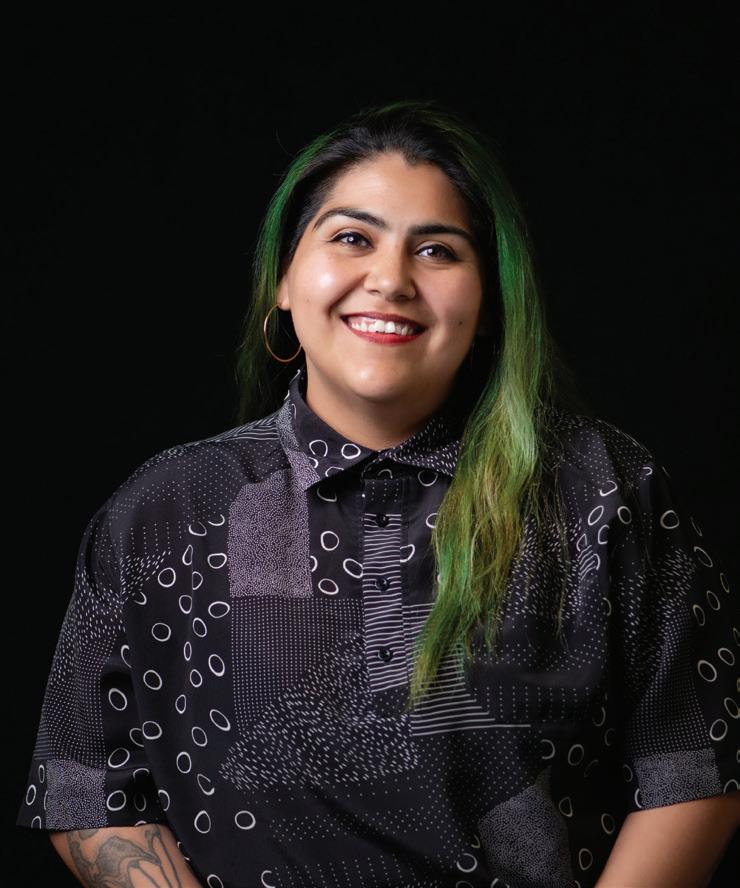
the Uptown, Edgewater, and Andersonville neighborhoods.
Jorge Silva joined Pivot in January as executive artistic director, after Ehre departed to become assistant director for programming and engagement at the Krannert Center for the Performing Arts at the University of Illinois Urbana-Champaign (she remains as an artistic associate for Pivot). This year, particularly with the heightened attacks upon diversity and BIPOC communities within and outside the arts, the festival decided to focus on the global majority. This year’s work is all created by local artists of color, with an emphasis on “community, environment, and identity.”
Silva, who previously served as managing director for the Neo-Futurists and as producing coordinator for the Goodman Theatre, also currently works with Northwestern’s Wirtz Center for the Performing Arts. In tandem with Tanya Palmer, former director of new play development at the Goodman, who now oversees programming at both the Wirtz Cen-
ter in Evanston and the downtown location, Silva and his Pivot Arts team are also looking at how to run the festival sustainably over time.
With the recent loss of new works incubator Links Hall and the attack on arts funding in general, creating space for multidisciplinary work feels even more important. Silva notes, “We often conflate bigger impact with bigger size, and we don’t appreciate that a specialization or a niche e ort can have a huge impact.”
All the events this year will be at Northwestern’s Wirtz Center in downtown Chicago.

“So we do lose the site-specific nature that Julieanne built,” says Silva. “But what we gain is a partnership that benefits both Northwestern and Pivot, but then also a scaling down and a specialization that I think is often not celebrated enough as a part of nonprofit arts.”
Northwestern theater student Katherine Dean Horton kicks o the festival this weekend with the play Friendship , about teenage girls at a sleepaway camp. Joining her are artists with long roots in Chicago performance, including puppet artist Tom Lee, whose solo The Great Zodiac Animal Race combines the Chinese zodiac (with a focus on this year of the snake) with Lee’s own childhood memories of celebrating Lunar New Year in Hawai’i. Denise Yvette Serna’s Sunset 60 Minutes looks at queer legacy and survival and draws in part on the diaries of Belgian theater and visual artist Jan Fabre, who often refers to himself as a “consilient” artist (a term inspired in part by Edward O. Wilson’s 1998 book Consilience: The Unity of Knowledge).
Lee describes his piece as “covertly experimental.” While the stories draw on traditional Asian tales, he notes that he’s using “not only traditional puppetry but some combinations of digital technology and the use of technology within the shadow puppetry that I think are really awesome, so people can see how tradition and innovation can exist in the same space. And a wonderful thing that Jorge has also done with Pivot is allow me to be able to give a workshop in some of these digital techniques as part of my performance.”
Visual artist Alonso Galue also draws on

mythology, in his case from Andean folklore, in his murals exhibited in the Wirtz lobby as “Paradise Aliens.” A native of Venezuela, Galue has worked previously with Teatro Vista in creating lobby experiences for theater and performance audiences, which is how he met Silva. “I’ve always had the idea that any space can be an artistic space,” says Galue. “So I saw that [Wirtz] lobby and I was like, ‘This is naked.’” Galue says his pieces “are really large murals that deal with the idea that humanity is a reflection of the universe looking at itself.” He adds, “We are shaped not only by the geographical areas where we are born and the specific qualities of it, including humidity, including heat, and how that’s going to be altered and keeps being altered every day. We have the urban universe that we inhabit. You’re going to be seeing [paintings] about species, about being part of the geography, being part of climate change, and how it is affecting all of us.” One of Galue’s paintings includes an image of a beaver as a representa-
7/ 12–7/27: Sat–Sun 7/ 12–7/ 13 7:30 PM, Friendship by Katherine Dean Horton; Sat 7/ 19 1 PM and 7:30 PM and Sun 7/20 1 PM, The Great Zodiac Animal Race by Tom Lee; Sun 7/27 2 PM and 7:30 PM, Sunset 60 Minutes by Denise Yvette Serna. Alonso Galue’s installation “Paradise Aliens” will be on display through 7/20. Wirtz Center Chicago, 170 N. Chicago, pivotarts.org/festival, free but reservations suggested
tion of the Canadian wildfires.
Serna’s piece is a work in progress created in part during a residency with Pivot, which also fits with Pivot’s goal of providing development opportunities for new and established artists. Serna, who has also worked with Teatro Vista and several other local companies, is a cofounder of Global Hive Laboratories, whose mission statement in part focuses on “international collaboration to foster empathy, bringing relevance and dynamic conversation about the artist’s role in social justice and civilian responsibility to the entirety of the population.”
Serna says the show in the festival is “a little bit of the ideas that I’ve been working on, and then a little bit of what comes from the artists that are in the room here in Chicago.” And while she says the piece is more on the theatrical end, it’s also “experimental and multidisciplinary and multilingual. I’ve added the ingredient that I will be simultaneously touring a presentation of a new translation of a play [by Fabre] called Night Diaries.”
For Serna, the multidisciplinary work done with both Pivot and Global Hive provides “ac-
cess points” for multiple kinds of audiences as well as storytelling techniques. “Not everybody is interested in a basketball game, but they might weep at the opera. And not everybody wants to listen to poetry, but they’ll cry when the Cubs win.”
She’s interested in finding “as many opportunities as possible for people to find an entryway in, whether it’s sound or texture or light, or the text, or things that they might be given during the performance.”
“We often conflate bigger impact with bigger size, and we don’t appreciate that a specialization or a niche effort can have a huge impact.”
Lee, who is also a codirector of the Chicago Puppet Lab at the Chicago International Puppet Theater Festival, emphasizes the tactile and visual nature of work in his field and across multidisciplinary performances. But he also finds that “the community of puppetry, at least in Chicago, is deepening, broadening, and it’s including so many more voices than are normally represented or historically rep-
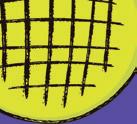


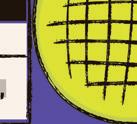



resented by the puppetry art of our country.” Finding community also galvanizes Galue, who first came to Chicago hoping to attend the School of the Art Institute but found the cost prohibitive. A member of the collectively run Agitator space, Galue notes that he also found early inspiration locally by seeing Edra Soto’s work at the Chicago Cultural Center. “I said, ‘Wait a second. She’s Puerto Rican. I’m Venezuelan, so if a Puerto Rican can show here, I can do it too.’ And I continued to look for my community, for my people.”
Silva’s goal for Pivot Arts is to show artists and audiences new ways to connect across genres as the landscape for arts organizations grows more fraught.
“I think from a sustainability standpoint, it’s also necessary to begin to think about how we change the model, so that we don’t necessarily
come to the point where financial woes stop these beautiful and experimental efforts in their tracks,” says Silva. “And so we can also survive global inflection points. I feel like that is a lesson that we didn’t learn a couple years ago. I think we were also eager to get back to normalcy so quickly that the notion of resilience, and what e ort it takes to become resilient, dissipated somewhat.”
Creating connections among artists is also an important social and political component for Pivot Arts and other festivals, like the Puppet Festival. Lee says, “I feel like one of the things that gives me real solace about being in this community is actually strengthening the people who I live and work with in this city. There are political actions that I can take, and I can go out there and I can vote, and I can try to do the things that I feel are important as a citizen. But I feel my calling as an artist has really been—especially in this time, this insane time—to give what I have away and to reach out and to build the community that’s here in this city and with other artists.” v
m kreid@chicagoreader.com
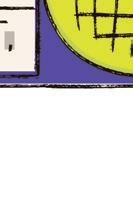





















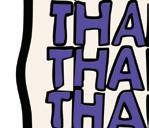
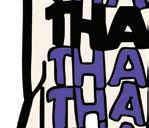





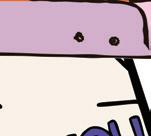

































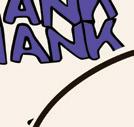





































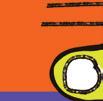




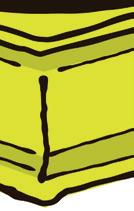
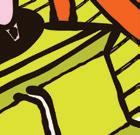





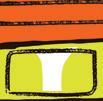




















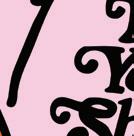
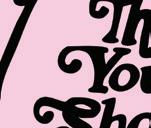
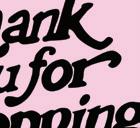
































































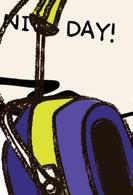

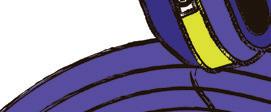









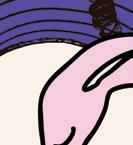


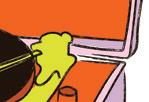
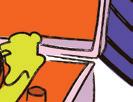





BenDeLaCreme is currently in a short run with Teatro ZinZanni, but it’s worth seeing in any season.
Inside a spiegeltent luscious with chandeliers, mirrors, velvet ropes, and disco balls, Teatro Zinzanni has long been the perfect venue for a date night, birthday party, or way to impress your out-of-town guests. But this cast of Love, Chaos, & Dinner brings the experience up a notch and makes a Chicagoan proud.
To spice things up, drag queen BenDeLaCreme (playing until July 19 only) serves up some refreshing truth bombs with her comedic stylings that enlist starstruck heterosexuals in the fun and games. The result is as flawless and fun as her frequent femme fatale costumes.
Simultaneously ushering us through a two-and-ahalf-hour whirlwind of pleasure is a tent full of clowns who also sing, dance, and deliver jaw-dropping circus feats. There isn’t a slow moment, but there is a fourcourse meal delivered to you by a waitstaff that clearly majored in musical theater.
The music sets the mood, delivering classic tunes, thanks to the seasoned house band (under the direction of Theodis Rodgers Jr.). Madame ZinZanni (played by the staggeringly talented LiV Warfield) belts out powerful tunes that shake the timbers of the tent and cause the audience to leap enthusiastically to their feet

to dance and sing along, especially during her duet with brilliant guitarist Phil Seed.
Combining comedy and classy surroundings with dinner is a German cabaret tradition that Teatro ZinZanni first perfected at its Seattle location. (They opened in Chicago at the Cambria Hotel in 2019.) Their commitment to hiring world-class talent—from the cast to the production team—makes for a big production value in an intimate setting. All you need

Oak Park Festival Theatre tackles Shakespeare’s gender-bending romantic comedy. Oak Park Festival Theatre (OPFT) has been presenting shows for 50 years, and 49 of those have taken place under the sheltering limbs of Austin Gardens’ giant trees, with an eager audience gathered around a wooden stage.
On the stage, and sometimes roaming the lawns, the players emerge to perform Twel h Night, or What You Will. Directed by OPFT artistic director Peter G. Andersen, on the surface the plot is pure slapstick, with misunderstandings and misidentifications driving the drunken revelries that unfold during a Twel h Night carnival season. But behind this are two grief-stricken women, Viola and Olivia, who have each lost a brother. As they navigate the world of the play, each asserting their independence, plot twists reveal some character strengths and flaws. Just like any carnival time, everything is topsy-turvy— gender roles are reversed, the dead return, tragedy becomes comedy, and the power structures of class roles are tested. It’s one of Shakespeare’s most popular plays for good reason.

then is to sprinkle in some chaotic clowning and circus, maybe from an unassuming handyman and cleaning lady (Samuel Sion and Sylvia Friedman). Between bites of dinner, you may see this duo sneaking onto the floor to clean or fix things. Somehow, they end up making bigger messes that require bubbles and leaf blowers. When a romantic opportunity arises, their alter egos appear and they are suddenly transformed from people just like us into the elegant Duo Rose team on trapeze performing breathtaking stunts.
The same can be said of the bartender, Raphael Nepomuceno from Brazil, who brings capoeira and aerial straps into the mix. There’s a vampy stewardess, Ukraine’s Vita Radionova, on hoops, and the maître d’ herself, played by Danila Bim of Brazil, who wraps up her expert duties for the evening with an aerial hair-hanging routine that elicits incredulous shouts of respect.
There may be a lot of live entertainment to be had in Chicago, but the unique setting and atmosphere of Love, Chaos, & Dinner continue to make it one of the most joyous and lavish events you could swing this summer. Whoever you invite with you will owe you one.
—KIMZYN CAMPBELL LOVE, CHAOS, & DINNER Open run: Thu–Sat 7 PM, Cambria Hotel, 32 W. Randolph, 312-488-0900, zinzanni.com/chicago/, $108-$227.50 (see website for seating chart and meal options)
OPFT gives the production a festival-like vibe that’s contagious. Apart from some opening night jitters with the songs, rollicking performances followed suit, especially from the well-versed Josh Carpenter (playing the pompous Malvolio) and OPFT veteran Kevin Theis (the mischievous Sir Toby Belch). The heroines in turn give stirring performances, namely Ama Kuwonu as Viola, Madison Kiernan as Olivia, and Julia Rowley as saucy maid Maria.
The audience is in on the misunderstandings from the moment when our witty protagonist Viola impersonates a man to protect and ingratiate herself to Duke Orsino (played by Evan Ozer). When she presents herself in male garb to plead Orsino’s case to Olivia, the latter becomes smitten with the young servant. With knowing glances, heavily implied hints, and sometimes even song, the court clown Feste (Elijah Newman) keeps us up to date on all the shenanigans while floating between social engagements. Among all of the action and buffoonery, it’s hard to imagine how romance and reconciliation could emerge, which is maybe why Shakespeare slaps those resolutions all in the last scene like an a erthought, so the audience can sigh with relief. As the Bard might have implied by his title choice—make of that what you will.
—KIMZYN CAMPBELL TWELFTH NIGHT Through 8/16: Thu–Sat 8 PM, Sun 7 PM; also Wed 7/9, 7/23, and 8/6 8 PM; Austin Gardens, 167 Forest, Oak Park, 708-300-9396, ext. 101, oakparkfestival.com, $40 (seniors $30, students $15, children 12 and under $5) v
THE SALT SHED THE SALT
THE SALT
SALT SHED THE SALT
THE SALT SHED THE SALT
THE SALT
THE
SALT SHED THE SALT SHED THE SALT SHED THE SALT SHED THE SALT SHED THE SALT SHED THE SALT SHED THE SALT SHED THE SALT SHED THE SALT SHED THE SALT SHED THE SALT SHED THE SALT SHED THE SALT SHED THE SALT SHED THE SALT SHED THE SALT SHED THE SALT SHED THE SALT SHED THE SALT SHED THE SALT SHED THE SALT SHED THE SALT SHED THE SALT SHED THE SALT SHED THE SALT SHED THE SALT SHED THE SALT SHED THE SALT SHED THE SALT SHED THE SALT SHED THE SALT SHED THE SALT SHED THE SALT SHED THE SALT SHED THE SALT SHED THE SALT SHED THE SALT SHED THE SALT SHED THE SALT SHED THE SALT SHED THE SALT SHED THE SALT SHED THE SALT SHED THE SALT SHED THE SALT SHED THE SALT SHED THE SALT SHED THE SALT SHED THE SALT SHED THE SALT SHED THE SALT SHED THE SALT SHED THE SALT SHED THE SALT SHED THE SALT SHED THE SALT SHED THE SALT SHED THE SALT SHED THE SALT SHED THE SALT SHED THE SALT SHED THE SALT SHED THE SALT SHED THE SALT SHED THE SALT SHED THE SALT SHED THE SALT SHED THE SALT SHED THE SALT SHED THE SALT SHED THE SALT SHED THE SALT SHED THE SALT SHED THE SALT SHED THE SALT SHED THE SALT SHED THE SALT SHED THE SALT SHED THE SALT SHED THE SALT SHED THE SALT SHED THE SALT SHED THE SALT SHED THE SALT SHED THE THE SALT SHED THE SALT SHED THE SALT SHED THE SALT SHED THE SALT SHED THE SALT SHED THE SALT SHED THE SALT SHED

JULY 13
JULY 11 PRIMUS .
. . .FAIRGROUNDS WITH TY SEGALL
JULY 12 TROMBONE SHORTY . . .FAIRGROUNDS & ORLEANS AVENUE WITH JJ GREY & MOFRO AND DUMPSTAPHUNK
JULY 15 & 16 ALABAMA SHAKES . . . .FAIRGROUNDS WITH LEE FIELDS
JULY 17 FATHER JOHN MISTY . .FAIRGROUNDS WITH LUCINDA WILLIAMS AND HAMILTON LEITHAUSER
JULY 18 KESHI . .
. THE SHED WITH STARFALL
JULY 19 & 20 LORD HURON . . . . . . . .FAIRGROUNDS WITH INDIGO DE SOUZA ON SALE NOW
Chicago’s drag superstar joins small-screen superheroes in Ironheart.
By CHARLI RENKEN

Before appearing on RuPaul’s Drag Race , Shea Couleé was like most drag performers: broke. It’s rarely a lucrative industry, but Couleé, on her way to becoming an icon in Chicago’s drag scene, was making it work. When she first started in drag, she was living on her best friend Sam Bailey’s couch and would get ready for gigs sitting on the floor, doing her makeup in front of an Ikea mirror leaned up against a wall.
“To this day, Sam and I are triggered by len-
til soup because we were so broke we lived o it for like ten days,” Couleé told me.
But those days are long gone. Couleé has since found major success as a RuPaul’s Drag Race season nine finalist and a Drag Race All Stars season five winner, expanding her career into music, modeling, directing, and acting. She’s always stayed true to her Chicago roots, though, continuing to live and work in the city. Recently, she did a special DJ set at the Chicago stop on Trixie Mattel’s Solid Pink Disco:
RI RONHEART
TV-14, six 50 -minute episodes, Disney+ ondisneyplus.disney.com/show/ironheart
Blonde Edition tour. She also supports her drag daughters Kenzie Couleé, Khloe Couleé, and Bambi Banks-Couleé and goes to local shows whenever she can.
Couleé recently played the super hacker Slug in Marvel’s Ironheart, which just concluded its first six-episode season on Disney+. Who was by her side for her biggest scripted TV moment yet? None other than Bailey, that same friend with whom she used to begrudgingly eat lentils. Bailey, best known for the web series You’re So Talented and Brown Girls, was chosen to direct alongside Angela Barnes. “I think the thing that was most grounding was that the director of the first three episodes was my friend. We’ve known each other since we were 18 years old. She was one of the first people I met when I moved out to Chicago to go to school at Columbia College. We were both in the acting program together,” Couleé shared. “To show up [to a Marvel set], to most people, as their first acting job, would be really intimidating. It was so great that she was there because she just reminded me of home.”
cago is home. Always has been.”
You’ll catch Easter eggs like the tavern-cut pizza Parker Robbins’s (Anthony Ramos) crew eats at their hideout, the Bucket Boys jamming

Ironheart —which expands on the Black Panther: Wakanda Forever (2022) character Riri Williams (Dominique Thorne), a young genius navigating grief and ambition after getting kicked out of the Massachusetts Institute of Technology—is quintessential Chicago both onscreen and o . Much of the cast and crew were made up of Chicagoans, Couleé says. Additionally, one of the creators of the original Ironheart character is local writer, scholar, and organizer Eve Ewing. While a lot of the show was filmed in Atlanta, the scenes that were shot here exude that resilient and lively energy that makes people fall in love with the City of Big Shoulders. As Williams says in the show, “Chi-
“Performative masculinity is a prison, and when they’re in prison and they look out and see someone dancing in the sun, they feel like they have to express their rage.”
out as Riri flies through the city in her iron suit, and a peek at Stan’s Donuts in the background. Even the sets that were created to look like Chicago all the way down in Georgia feel authentic, something Couleé was surprised by.

“I would step on set, and it was kind of trippy ’cause they were able to remake some Chicago landmarks. It was trippy to be there but not be there,” she explained.
One such landmark they re-created was an entire White Castle in which Riri fights off Parker’s crew once they turn on her. According to promo footage, people in Atlanta thought it was a real restaurant and would try to get in, only to be shooed away by production.
Darkveil was inspired by her. “It’s hard to sometimes imagine yourself being such a muse for somebody. It’s really humbling. I love the stories that Sina [Grace, Iceman writer] likes to tell, and I was just really appreciative that he thought to utilize my drag brand as a model for creating Darkveil.”
Some fans theorize that Slug is actually Darkveil in disguise. In the comics, Madripoor is both a hotbed of criminal activity and a haven for mutants, and since Darkveil is a mutant, it wouldn’t be a huge surprise if Slug’s codename is hiding more than it seems. It would also be a full-circle moment for the drag performer who inspired the character to play them, but we’ll have to see what happens in season two.
Reactions to the Ironheart series seem to be mixed. My queer friends and I loved it, but some of the more “comic book bro” archetypes online haven’t been as enthusiastic. That doesn’t surprise me; while the comics have
The world would be a better place if comic bros realized cosplay is no different than drag.
Couleé brings a lot of humor and complexity to Slug. We don’t get a ton of backstory on the hacker extraordinaire besides a brief flashback of them in drag and the fact that they fled the (fictional) island of Madripoor due to some trouble that may or may not still be following them, but that doesn’t make them any less interesting. While the character has some great one-liners, Couleé also brings depth to Slug— who clearly has more cards up their sleeve than are revealed in the series so far. Couleé crafts the veil Slug wears well, and it will be exciting to see what’s behind it next season. Playing Slug is not Couleé’s first interaction with Marvel. Upon seeing leaked images of Couleé sporting green hair on set, many fans assumed she’d be playing Darkveil, Marvel’s first drag queen superhero who debuted in 2019 in the comic Iceman. They weren’t crazy to think that—Darkveil is partially based on Couleé, after all.
“It was a little bit of an out-of-body experience,” Couleé said about finding out
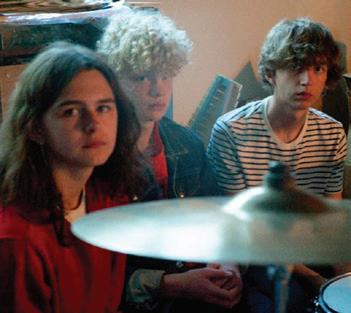
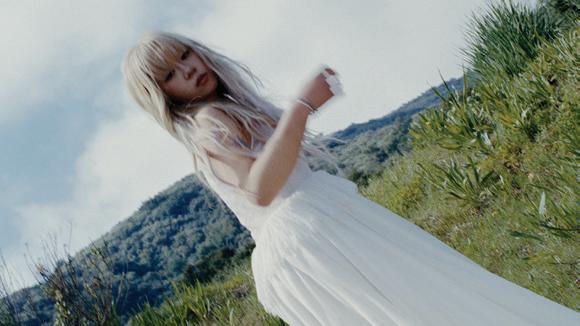


always had themes of marginalization and social justice, some fans are reluctant or downright hostile to what they perceive as “forced diversity” or “wokeness.” When Ironheart first appeared in the comics in 2016, there was a lot of backlash to a Black woman taking up Tony Stark’s mantle. It’s the same anti-progressive argument that rears its ugly head every time someone other than a white, cis, straight man stars in a Marvel Cinematic Universe project, and it’s tired.
Couleé has a message to fans who might not be happy to see drag in the MCU: “Try it. You might like it.” She says that when people have a problem with drag, it often stems from intimidation. “Performative masculinity is a prison, and when they’re in prison and they look out and see someone dancing in the sun, they feel like they have to express their rage. So I would just say to them, ‘Give [drag] a try.’” The world would be a better place if comic bros realized cosplay is no different than drag. v
m crenken@chicagoreader.com
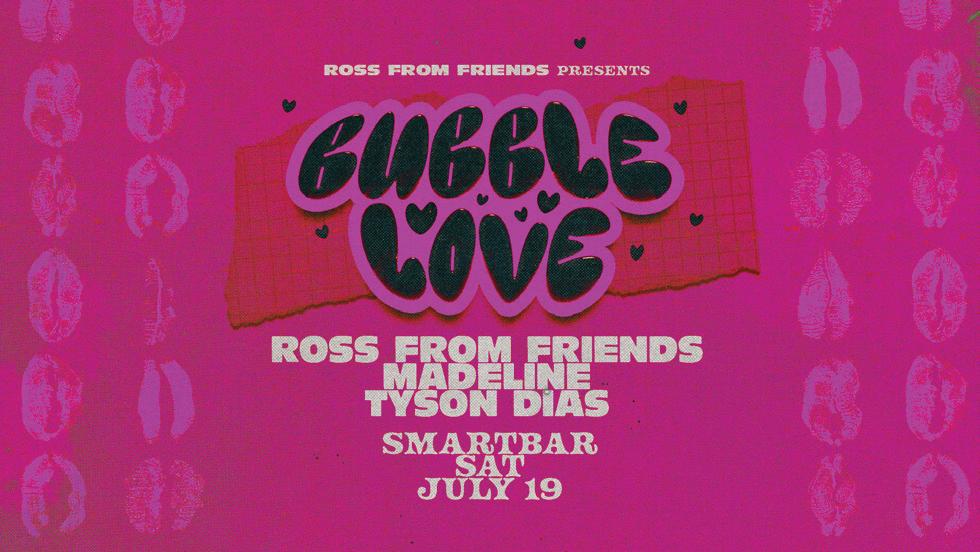
R“ THE ACT OF RECORDING IS AN ACT OF LOVE: THE SOUTH SIDE HOME MOVIE PROJECT” Fri 7/11–Sun 8/24: Tue–Sun 9 AM–9 PM, Reva and David Logan Center for the Arts, 915 E. 60th, free, sshmp.uchicago.edu/events/exhibition-the-act-of-recording-is-an-act-of-love-the-south-side-home-movie-project

The South Side Home Movie Project celebrates two decades with the multimedia exhibition “The Act of Recording Is an Act of Love.”
By KAT SACHS
When I spoke with University of Chicago cinema and media studies professor Jacqueline Stewart—also the former director and president of the Academy Museum of Motion Pictures and host of Silent Sunday Nights on Turner Classic Movies—about the South Side Home Movie Project (SSHMP), I asked her if there was anything amid the extensive collection of footage that’s stayed with her over the years. Stewart founded the venerable organization in 2005, thus making this year its 20th anniversary.
“One of my favorite clips in our collection is [of a woman named] Jean Patton showing o her kitchen,” she tells me. “The new appliances, all-gold refrigerator, gold sink, gold bread box. And she’s wearing these gold lamé pants as she walks around and plays solitaire at her gold table. To me, it really encapsulates that pride in one’s home, of domestic space as a creative space. . . . We just don’t get that level of detail, I don’t think, in other kinds of film or other kinds of stories about life on the south
side of Chicago.”
This, in a nutshell, is why the SSHMP continues to be an important endeavor, as it not only preserves—to the tune of more than 1,200 reels of small-gauge film shot by south siders from the 1930s to the 1980s—but also seeks to promulgate these aspects of Black life, both in general and specifically on the south side of Chicago, which is often either woefully overlooked or egregiously misrepresented. In celebration of the organization’s milestone anniversary, a multimedia exhibition entitled “The Act of Recording Is an Act of Love” will be on view at the Reva and David Logan Center for the Arts from July 11 through August 24. I spoke with Stewart over the phone about the history of the SSHMP, the lives of Black Chicagoans, community-based archiving, and the new exhibition.
This interview has been edited for length and clarity.
Kat Sachs: Can you tell me about the founding of the South Side Home Movie Project? I also read that you founded it after studying orphan films and, in addition to that history of how the SSHMP came to be, I’m curious what struck you most about the absence of Black south-side home movies and of cial archives?
Jacqueline Stewart: I became interested in home movies as a new area for scholarly study. You know, there’s so many di erent types of films that film historians had not really looked at. Film critics are really focusing on narrative films, commercial films, feature-length films. But I learned that there was this vast body— actually a larger body—of material that really needed to be understood if we wanted to grasp the significance of the moving image in our society and in our cultural history. I am from the south side of Chicago. I grew up in Hyde Park and spent a lot of time with my family at my grandparents’ houses in Princeton Park and in Chatham. And I have always been really curious about the history of south-side neighborhoods. I suppose I’ve always been frustrated, too, by the way that the south side has been represented in mainstream media and journalism as this place of danger and dysfunction, when I know from my personal experience that’s not true. So all of those interests, both my personal connections to the south side but also my scholarly interests, just really came together through this lens of home movies.
It’s interesting that you were looking to ll both this void in terms of the archive but also for yourself.
Some of it also was just about getting validation in a way. I mean, I know I used to obsess over my family’s photo albums. We would look at those on a Saturday night with my grandmother, and you would see these still images of my mom when she was younger and see my cousins before I knew them, relatives who had passed away before I was born. And one of the things that I’ve learned in working with home movie material is that it can activate some of the same kinds of, you know, nostalgia and storytelling that still images can create, but they also just add this additional layer of meaning because they’re moving images. One of the things that we’ve always done with the SSHMP is we digitize the footage. And very often families who have donated this material, they haven’t seen these films in a really long time, because even if they have saved the films, they didn’t necessarily save the projectors or know how to use them, if they still function. So they’re seeing these moving images of relatives, and there’s a qualitatively di erent experience seeing a still photograph of your grandmother or seeing your grandmother walking around, cooking, smiling. And it can be very emotional for people. So we always take the time to first show this footage to the donors before we then open it up to all of the di erent viewers and artists and students that we also hope will value and study this material.
How has engaging those donors, through the collection and digitization, the oral histories and exhibitions, reshaped your understanding of community-based archiving?
Well, I guess I didn’t know a whole lot about community-based archives. But to my mind it was always like an archival project in the sense of materially preserving this body of films. So we store the original films in the University of Chicago’s film vaults for long-term safekeeping—climate-controlled, optimal conditions. And then we have the digital archive, which is not just about ways of streaming the films
on our website, which we do, but also digital preservation, all of the back end of ensuring that these digital files are being checked and refreshed so that they will last as well. There’s all the archival stu , but to me, it was always about community dialogue and engagement and collaboration.
Building trust has been critical because the University of Chicago has had a really complex and, to the minds of many south siders, a negative relationship, [as] an agent of urban renewal, gentrification. How could we create a project where people would feel comfortable handing over these deeply personal, unique materials? Working with the donors has always been about being really transparent about how we handle this footage physically [and] intellectually, consistently inviting the donors to help us understand the footage, to provide context. So, performing these oral histories becomes a valuable family history for them as well, not just a research resource for us. And we are consistently inviting donors to participate in our programming and even help us shape the programming.
These films are largely silent, so their narration, let’s say, at public events, is really critical to understanding what’s going on. Where are you? And who are these people? “This is Aunt so-and-so,” “This was my graduation from UIC,” like they’re providing as they would have done when watching these movies at home. And there’s a lot of talking with this footage. We try to replicate a lot of that in our programming as well. So I guess as a community-focused archival project, what’s really key is that we don’t just think about taking material away from people and think we know better how to handle it, locking it up. Instead, collecting is the beginning of a relationship of deep dialogue between us and the donors, but also between the donors themselves—across sometimes, like, racial lines, which is amazing to see for sure—and with other people who are interested in looking at this really rare and beautiful footage.
Your project and this material resist dominant narratives about Black life in Chicago. I’m curious about the kind of experiences you’ve had and the joy, leisure, or nuance that has emerged that we might rarely see elsewhere.
You know, I think this is one of the things that people value so much about the project, especially African American viewers, is that it a rms family relationships. People often use terms like joy and intimacy when they look at
this footage. And we have to remember that, unlike shooting video on our phones, or even shooting video with a camcorder . . . we’re talking about small-gauge films, 8 millimeter, Super 8 millimeter films, for the most part, that are on reels, that might be ten minutes long. So turning the camera on and off is a really conscious decision.
People want to use this footage wisely. They paid for the reel, they’re going to mail it o , get it developed, and get it back. So there are these really concentrated performance styles, I guess you could say, in the footage, where people are showing themselves in their best light. You know, like when people are dressed up for Easter Sunday or for a birthday party or a wedding, they’re trying to get the highlights. So in a way, these films are, given the nature of the format itself, highlights, moments of pleasure and joy, vacations, celebratory moments, milestone moments. And because of that, it turns out that this becomes an archive that really speaks against these narratives of dysfunction and criminality and joylessness that have too often been associated with Black life. I’m really grateful that so many documentary filmmakers, because they can’t find footage of, like, mid-20th-century Black life in most archives or traditional footage houses, they come to us for that kind of material. That’s been a wonderful way that these images have been shared more broadly.
What unique insights do you think home movies provide compared to commercial and narrative cinema?
One thing is that the moving image has permeated everyday life long before our phones.
This is a practice that predates the digital technologies that we so often say, you know, democratized filmmaking. It’s definitely true that digital tools have made it possible for a broader group of people to make commercial films or, you know, to become professional filmmakers. But small-gauge cameras and putting up a screen in your basement are things that everyday people have been doing for a very long time.
And I think that that also just gives us a different way of understanding [of] who we call filmmakers. Then another thing that has been really fascinating for me has been to think about the aesthetics of small-gauge filmmaking. People, of course, are not always the greatest cinematographers, but in many cases, they’re trying to be. They’re trying to light these scenes in the right way and to pan and zoom.
There are some films that have these accidental double exposures or light leaks. And when you watch these films, you’re just super conscious of the person holding the camera and the placement of the camera. And, you know, we’ve seen that there are avant-garde filmmakers who pick up on some of these kinds of aesthetics. But I love to think about these films not just for the so-called content that they hold. Yes, we have Bud Billiken parades, we have footage of [former Emperor of Ethiopia] Haile Selassie’s first visit to Chicago—you know, historic moments, architecture of the past, the way people dressed, all these really valuable things that we might call the content. But the form of amateur filmmaking is super interesting.
I’d love to hear you talk about the labor involved in things like the processing, preserving, and cataloging of home movies, especially with these community-based materials.
I feel very fortunate to have been connected to an incredible community of moving image archivists who share their skills and their knowledge so freely because they’re committed not just to the specific archives they work in, but to film preservation overall. When I was starting this project, there was a group of archivists that started the Center for Home Movies and this initiative called Home Movie Day, that has now grown to sites all across the country, all around the world, where people bring in their footage and learn about how to preserve it themselves or to deposit it in an archive.
And I had to learn what was going to be involved in taking stewardship of these materials. I mean, when we get these reels, they’ve often been in boxes in a basement or attic or garage, you know, where they’ve been subject to a lot of temperature fluctuation. Especially here in Chicago. We get reels often that have shrunk so they can’t be run through a projector. We have to clean them, often fix splices. It’s really tedious work. I’m really grateful that not too long ago, we were able to purchase a scanner to scan the films to digital that doesn’t have perforations. It’s a sprocketless scanner, so that even when the footage is kind of curled or shrunken, we can still get frame-by-frame digital images . . . copies that we put together in the file that we have. We don’t do a ton of color correction because . . . I don’t see our role as trying to fix these films.
But where there’s damage that makes images hard to see, we can make some adjustments to try to capture the image better. We put all the films in new cans, vented cans, because
they’re often in these cardboard boxes or metal cans that just accelerate their deterioration. We treat each film as precious. The films are unique.
It’s a reversal film process. So when people were loading their cameras, what they shot was what they would mail off to Kodak and then get mailed back. It wasn’t like there was a separate negative. Each of these reels is the actual physical thing that ran through the camera. That’s all the more reason why we try to do no harm and really document carefully every step of our preservation process.
Can you tell me about the exhibition, “The Act of Recording Is an Act of Love”?
The exhibition really will give people an overview of the project and demonstrate how deeply embedded it is in the community, that it’s a collaboration, and that it’s all about interaction with the archives. As you come in, you’ll learn about how we put out the word back in 2005—flyers that we put around in grocery stores and leaflets that we were passing out at the Billiken Parade, just inviting people to share their footage.
We’re going to have an area where we really walk people through the mechanics of physically collecting and cleaning and digitizing the material and caring for this stu in a way that will enable it to last in perpetuity. There’ll be an area that highlights one of our most important activities, which is something we call community cataloging, where we invite people to actually tag the footage. Like, what are your memories? Can you help us identify some of these locations or moments, and what are the memories that they evoke for you? That’s something that people can do when they register with the project on our website, and we’ll have some stations where people can do that kind of community cataloging in the gallery.
Then we’re going to have an area that displays a lot of the creative reuse projects that people have done over the years . . . [and] we’ll have a little station where people can choose images and music and put together their own remix of south-side home movies.
We’re going to have a screening room where, every day, a di erent family’s films will be running through the run of the exhibition. So when you come, you might see members of the family there talking about the films that are showing. v
m letters@chicagoreader.com
t Begyle Brewing on Sunday, June 8, the Chicago Independent Radio Project hosted its third CD Blowout Sale. CHIRP founder and general manager Shawn Campbell says the sale’s debut in May 2022 was a way for CHIRP to get back into hosting public gatherings after the arrival of COVID. It had to be outdoors, and it had to be a lighter lift than the big annual CHIRP Record Fair & Other Delights, which took at least six months to plan (and which ended its 20-year run in November). CHIRP has a lot of CDs, and the CD Blowout Sale was also a way to do something useful with them.
The station has collected CD donations since its inception, and every Record Fair featured CHIRP tables overflowing with cheap CDs. CHIRP hosted the first Blowout Sale at Burning Bush Brewery, down the block from its headquarters, and because it was free to browse, attendees came and went as they pleased. Despite the casual vibe, Campbell could see that people still liked CDs. But nothing prepared her for the response to this year’s CD Blowout Sale.
“There was a line waiting for us to open,” Campbell says. “We did it from two till six. For the first three hours, it was packed, and then the last hour, it opened up a little bit. But I feel like it was the last hour where we had people who had been shopping all day who were coming to us with stacks of, like, 70 CDs.” Prepackaged boxes of ten CDs cost $1, and the most expensive discs were $3. All proceeds went to CHIRP, which raised about $5,000. “Clearly,” Campbell says, “people are hungry for CDs.” I never stopped buying CDs, both because of my job and because of my approach to collecting: If it can play music and the price is right, I’ll pick it up. I prefer any physical format to streaming, which often feels like dunking my head in a slop bucket. Lately, what’s drawn me to CDs has been the cost. After I became a father last year, my budget for music shrank, but my appetite for it didn’t. CDs are consistently cheaper than vinyl. In October, when Superior Viaduct announced preorders for the 2024 Cindy Lee album Diamond Jubilee, I picked up the $24 double CD, which cost less than half as much as the triple LP.
I know I’m not the only one buying new CDs. In April 2023, Billboard noted a 2.5 percent increase in CD sales in the first ten weeks of the year, compared to the same period in 2022. That uptick resulted in 6.9 million CD sales over those ten weeks, competitive with vinyl but still a drop in the bucket compared to the
Vinyl has long been the big story in physical media, but CDs are cheaper, quicker to manufacture, and poised for a comeback.
By LEOR GALIL

hundreds of millions of CDs sold annually in the late 90s. The format will likely never return to those pre-Napster heights, when CDs made up more than 90 percent of music sales, but consumer habits have started to change.
“I would say, maybe a decade ago CDs were a bit more niche, as far as something that collectors would go after—there’s definitely a specific breed of CD collector out there,” says Colin Blanton, who processes used CDs for Reckless Records in Wicker Park. “I think desirability has changed over time. On a more, like, mainstream scale, it’s certainly not back to the 1990s style of CD consumption. But the younger kids are buying lots and lots of CDs these days.”
Young people are also releasing music on CD. In February, jazz trio the Kevin King Regime self-released their debut album, Call to Action!, on CD and as a Bandcamp download. Bandleader and saxophonist Kevin King sees CDs as a way of claiming more agency over his musical career. “I think it’s really cool that we have the choice to say, ‘Hey, we’re not gonna put this on streaming services. We’re not gonna put this on vinyl,’” he says. “It’s really cool to have that choice as young artists and really promote our views through every aspect of the music—not just the playing, not just the creation of it, but in the distribution of it as well.”
Anecdotes aren’t data, of course, but in recent years I’ve noticed more emerging local artists and labels selling CDs. Dance label Yearning debuted in 2023 with the variousartists compilation Yearning for Beauty , issued on CD-R in an edition of 60. The label has since released three more CD-Rs, all of which have also sold out. In February, arty experimental dance duo Easygoingtech issued their self-titled debut on CD and sold out their first run of 100 CDs within 24 hours. These numbers won’t move the needle nationally, but they’re evidence that people who care about supporting the underground Chicago scene see CDs as a meaningful way to do so.
Pelican guitarist Laurent SchroederLebec never got hooked on purely digital music, whether downloaded or streamed, and he never stopped collecting CDs, cassettes, and vinyl. Five years ago, he noticed a shift in how music culture engaged with physical media. “COVID upended a lot of things for a lot of people in regards to all three of the leading musical formats,” he says. With shows on hold, music fans showed love for their favorite acts by buying merch.
Vinyl still accounted for a lot of sales—41.3
million units in 2022, according to the Recording Industry Association of America, compared to 33.4 million CDs. That strained the country’s vinyl-pressing plants, so that musicians sometimes waited a year for their new record to get pressed. Fans could preorder an LP that would take months to arrive, or they could buy a cassette or CD they’d get in days. CDs began to look a little more attractive. Though vinyl’s share of physical-media sales has been increasing for years (in 2022 it passed CDs for the first time since 1987), data collected since then suggests that the growth of the gap is slowing.
Pelican never stopped putting out albums on CD. When Run for Cover released Flickering Resonance in May, Schroeder-Lebec noticed something different about the way Pelican fans celebrated its arrival. “It’s unusual for me to see Instagram stories of people being like, ‘Finally got the new Pelican!’ and it’s a copy of the CD,” he says. “[Before now,] nobody would’ve done that. It would’ve been, like, ‘Finally got the record on my favorite color.’ CDs are just, like, the format.” Run for Cover has leaned in too, selling 30-CD wallets with the label’s logo, some of them preloaded with five of the label’s releases. One option includes Flickering Resonance and Horrible Occurrences by Chicago indie-pop project Advance Base. Many of the people I spoke with about CDs see the value in every format. “It matters a lot to me to have a physical incarnation of music,” says Maxwell Allison, aka experimental producer Mukqs. “I’ve got 900 vinyl records in our home. I’ve got a similar amount of CDs and tapes. CDs are such a nice middle ground—the Goldilocks of physical media. A tape, I love its compact nature. I love being able to line up a ton of tapes on the wall and select them and pop them into the deck. With a vinyl record, you have a flat square, and it takes up a lot of space, but it gives you the perfect large-scale opportunity to look at the art and admire the physical product. With the CD, it’s right in between those things. It doesn’t take up too much space, but it still has enough surface area to make substantial art.”
Allison runs two labels, Blorpus Editions and Hausu Mountain, both of which release CDs. At Hausu Mountain, he and cofounder Doug Kaplan leave it all on the field, giving every release a monthslong promotional campaign and paying to have their cassettes, CDs, and LPs professionally manufactured. Atomic Disc in Salem, Oregon, makes HausMo’s CDs. Allison launched Blorpus as a low-e ort netlabel, and he sends its CD orders
to a bare-bones on-demand manufacturer in Nevada called Kunaki. “It feels like I’m making a bootleg CD,” he says. CDs sometimes catch flak for their flimsy, disposable appearance, but Allison finds that aesthetic charming in the right light. “I feel like there is a place for the super-deluxe, beautiful high-resolution CD,” he says. “And there is definitely a place for the ‘something that fell off the back of a truck’–looking CD.”
KEVIN KING REGIME JAM SESSION
Sign-up begins at 7 PM, house band plays at 8 PM, jam session begins at 8:30 PM. Tue 7/15, 8 PM, Cafe Mustache, 2313 N. Milwaukee, free, 21+
BLUSH SCARS, CRISIS ACTRESS, DUMBSUCKER
Wed 7/16, 7:30 PM, Ramova Loft, 3520 S. Halsted, $16, $10 in advance ($14.39 with fees), all ages
PELICAN, COALESCE, PORCELAIN
Sat 7/26, 8 PM, Thalia Hall, 1807 S. Allport, $26.47 GA, $39.34 seated balcony, 17+
CDs have DIY appeal too. Chicago postpunk band Blush Scars just self-released their new album, Summoned , and front man Sean McCormick made runs of 50 CDs and 50 cassettes at home. “I did all the CDs within one day, and now I’m on day three or four with these tapes,” he says. Burning CDs didn’t just give McCormick an inexpensive way to release his band’s music on physical media; it also reminded him of when he used to burn his own mixes on CD. “I think there’s kind of a nostalgia factor towards it,” he says.
The CD is now a vintage format. More than 22 years have passed since Apple launched the iTunes Music Store, a key moment in the music industry’s slow embrace of its digital future and the CD’s cultural decline. Signs of the format’s ubiquity—CD drives in computers, CD decks in cars, the Sony Discman—disappeared piecemeal over the ensuing decades. (You could buy a new Chevy Express van with a CD player as recently as 2021.) CDs themselves have never been scarce, but when the market for CD players collapsed, it got hard to find anything but cheap crap or inaccessible audiophile equipment. “Where’s the consumer-priced, nice CD player?” asks Alex York, who owns Torn Light Records with Dan
Buckley. “That’s the problem.”
York says Torn Light sells about 500 CDs a week on average. “I’m selling CDs to mostly, majority, people in their 20s,” York says. “College kids, especially with groceries and rent being the way they are, they still want to go out and buy something for themselves. They can’t afford the $38 double LP of an Elliott Smith record—that’s my example, because that’s the CD I sell the most to college kids. . . . You only have 30 bucks to spend. Grab two albums, you know?”
Torn Light also releases music on vinyl and CD. In April, the shop’s label pressed 300 CD copies of The Other World by experimental musician Michael Vallera (Cleared, Luggage).
York knows how CDs work, because he’s the logistics and product coordinator for Clandestine Label Services. (The founders of New York label Northern Spy founded Clandestine in 2010, and York and Dan Buckley have since bought in as co-owners.) This puts him in a good position to guide labels through the process of manufacturing CDs.
“We just got back from a work trip where we met up with some of the manufacturers on
the east coast,” York says. “We met up with label managers from 4AD, Warp—legendary underground indie labels. One of their biggest takeaways from our big meeting was, ‘Don’t underestimate the CD.’”
The meeting also gave York a chance to ask 4AD about stock for the shop. “I was like, ‘It would be nice if I could have every Cocteau Twins album [that’s] out on CD,’” York says. “They’re like, ‘We can’t keep them in print. We’ll make a couple thousand, and then they’re gone in a couple weeks.’ It’s like the 90s again. It’s good for the record labels and the bands. CDs cost nothing to manufacture. Now there’s eco-friendly ways to make them; they’re using recycled plastics.”
York is a real believer in CDs—they draw him in at other record stores. “I don’t even look at records,” he says. “There’s too many already. I could look at the wall and go, ‘Oh, some [first-pressing] acid folk from 1970 from the UK,’ and it’s $1,700. I’ll never buy that, but I do want to hear it. I’ll gladly go buy a CD copy for $13.” v
m lgalil@chicagoreader.com

As a session and support musician, he backed giants of soul, jazz, funk, gospel, and more—including Ramsey Lewis, Ruby Andrews, and Tyrone Davis.
By STEVE KRAKOW
Since 2005 Plastic Crimewave (aka Steve Krakow) has used the Secret History of Chicago Music to shine a light on worthy artists with Chicago ties who’ve been forgotten, underrated, or never noticed in the first place.
In June, the Hideout hosted a 20th anniversary celebration for the Secret History of Chicago Music, and from the stage I talked about the many cosmic convergences the column has brought about over the years. Then another one happened. During a panel discussion with author Aaron Cohen and soul singers Renaldo Domino and Jackie Ross, I asked Ross if she knew who’d played the funky, psychedelic guitar on a rare 45 of hers that I’d brought with me. Someone chimed in from the audience: “I did!”
That guitarist turned out to be Byron Gregory. At 72 years old, he hadn’t been to a club in a decade, but Cohen had talked him into coming out. Cohen put me in touch with Gregory afterward, and we had a three-hour interview—one of the longest I’ve ever conducted for Secret History. Gregory also told me that he’s been a fan of the column from the beginning.
Gregory’s memory is sharp, and his story overflows with his love of music and his excitement at rubbing elbows with legends and playing a part behind the scenes of the industry. You won’t find most of this published anywhere else, and it’s a wild ride—you’ll hear about Gregory touring with Earth, Wind & Fire
at their peak, working on jingles for McDonald’s, learning how to stay unbothered by gangs, and committing himself to the religious faith that saved his life.
Byron Gregory was born in Bronzeville on November 2, 1952. His family had arrived in Chicago’s “Low End” from Georgia and Mississippi, fleeing Jim Crow and looking for better jobs. When Gregory came along, the family was living on 57th Street. “I was a baby sleeping in a drawer, and Koko Taylor shared the apartment with us,” he says. “My mom always told us that Koko Taylor nursed me while my mom was away. I can’t verify that, but every time I saw Koko, she asked about my mom, OK? That would have planted some love for music!”

terested in being able to play talent shows.”
Gregory picked up popular songs by ear, and he soon started adding his guitar to young doo-wop groups harmonizing on street corners. He played talent shows at churches and high schools, and he remembers that if you did well in those, you could get a shot at a big competition in the parking lot of a Henry’s Hamburgers on 35th o King Drive.
When Gregory was little, he saw Elvis Presley on TV. After that, every chance he got, he’d strum on a broom to imitate the star. Gregory’s grandparents bought him a Silvertone acoustic guitar and paid for music lessons from bassist Larry Kent. “He was a real stern, strict guy, but he played all the jazz clubs,” Gregory says. Kent pushed him to learn how to read music. “And I was like, ‘This ain’t what I want to do!’ But I said, ‘OK, my grandparents are paying for it. I’ll do it.’ But I was more in-
At age 14, Gregory caught the ear of producer and writer Clarence Johnson, who’d recently left the Chi-Lites. He had a hand in several small labels and was working with a group called Patti & the Lovelites. Gregory became Johnson’s go-to session guitarist, and over the next few years he played on singles by the Lovelites, the Ledgends, No No Starr, and Deniece Chandler (later Williams). “For each artist, he would form another label,” Gregory recalls. Johnson’s many imprints included Red Balloon, Lock, and Keanya.
These sessions helped Gregory land gigs backing the artists onstage, notably at the Burning Spear (in the former Club DeLisa space at 55th and State). Still too young for bars or clubs, he painted on a mustache to try to look older. Gregory missed a lot of classes, and he got kicked out of Mendel Catholic High School in 1967. He enrolled at a di erent Catholic school that he liked better because it also admitted girls, and he graduated in 1970. Gregory also discovered that playing guitar provided him a kind of diplomatic immunity on the streets. “Around ’66, the gang stuff started on the south side and the west side,” he says. “You couldn’t go to certain neighborhoods—if you were from a Gangster Disciples hood, you couldn’t go to 63rd or a Blackstone Rangers area. Man, you have a guitar case, you could walk anywhere. It was a passport, because everybody, even in the gangs, wanted to sing and be in talent shows.”
This let Gregory venture to the west side, where he met fellow teenage guitarist Larry Blasingaine, who in 1967 played on the Jackson Five’s first professional recording. (It was lost until Jake Austen helped find it while researching a Reader story in 2009.) Gregory also played in groups with kids who lived in a south-side housing project, in the same building with blues guitarist Lefty Dizz. Gregory was a huge fan of Muddy Waters (his biggest early influence after Elvis), but he befriended Dizz without yet knowing his importance. Working for Johnson let Gregory do what he loved most. “I’m becoming a little studio guitarist, which is really my dream,” he says. “Not to play live—I just want to be in the studio, creating guitar parts that you can maybe hear on the radio. So now all of a sudden wah-wahs are coming out, and fuzz tones—you know, Hendrix. So I get a wah-wah pedal, a Cry Baby, and I’m doing all these sessions, $25, $50 a song.”
Gregory’s hip sound and ability to read charts earned him a coveted spot in the house band at the Regal Theater, led by drummer Red Saunders. He learned from Wayne Bennett (Bobby “Blue” Bland’s guitarist) and got comfortable with jazz. Pianist Tom Tom Washington was an arranger for Brunswick Records, and bassist Richard Evans worked with Chess subsidiary Cadet. Once they saw what Gregory could do, they hooked him up with higher-profile sessions.
Gregory remembers playing for the likes of Ruby Andrews and at A-list studios such as Universal Recording and CBS. “For me it was like heaven on earth,” he says. “I just started getting recommended for anything that Phil Upchurch and Pete Cosey didn’t do because they were on the road or too busy.”
Soon Gregory was called up for jobs with Motown session masters such as bassist Bob Babbitt and guitarist Dennis Coffey, both members of the famous Funk Brothers. He also worked with drummer Bill Maxwell, who would become a legendary gospel producer after decamping to Los Angeles with Andraé Crouch in 1972.
Around the time the Five Stairsteps released their hit “O-o-h Child” in 1970, Gregory played live with the band. He also remembers traveling to San Diego for a gig in Balboa Park with saxophonist Eddie Harris—he says guitarist Ronald Muldrow recommended him for the gig, so it was probably in the early 70s, shortly after Muldrow started working with
Harris. “I had never flown before, or seen a crowd of thousands of people on a hillside,” Gregory says. “It was crazy.” And that Jackie Ross single I brought to the Hideout—a U.S.A. Records release called “Doctor Slap’s Man Is Born”—came out in 1971.
Alas, Gregory doesn’t remember any details of the Ross session. Because he was rapidly becoming a first-call session player, he often cut as many as ten songs per day, sometimes not even learning who the artist was. Often the singer wasn’t there, just the producer. Gregory describes the vibe as “get in there and get your parts quick.”
Gregory would record at studios such as Paragon, Chicago Recording Company, and Paul Serrano’s P.S. Studios. At Serrano’s, Gregory played on a couple of early-70s albums by pianist Ahmad Jamal, produced and arranged by Evans (from the Regal Theater band). Around the same time, he shared sessions with saxophonist Gene Barge and the team of Marvin Yancy and Chuck Jackson—and the latter brought in their young protege Natalie Cole. Gregory would also record a few blocks away at Ter Mar Studios, in the new Chess building at 320 E. 21st. He got a lot of work thanks to larger-than-life producer Ralph Bass, then A&R director for Chess.
In the early 70s, Gregory got a call from beyond-legendary producer Charles Stepney, who asked him to cut a demo in his basement home studio. “I’m intimidated, but I’m happy to be there,” Gregory recalls. The track ended up being for Ramsey Lewis, and this would begin Gregory’s long association with the jazz keyboardist. He would contribute to Lewis’s smash fusion records Sun Goddess (1974), Don’t It Feel Good (1975), and Sălongo (1976).
Stepney hooked Gregory up with lucrative jingle work for Coca-Cola and McDonald’s and played him demos of an album he’d produced with Earth, Wind & Fire, That’s the Way of the World, before it came out in 1975. Stepney was also childhood friends with Gregory’s future mother-in-law—which Gregory learned when Stepney turned up at the wedding!
Lewis and his live band opened for Earth, Wind & Fire in Chicago shortly before Sun Goddess came out, and percussionist Derf Reklaw (previously of the Pharaohs) invited Gregory to sit in. “It was the closest I’ve been to being in a rock show,” Gregory says. “The drummers were turning upside down, rotat-
ing. The show was so exciting. I was hooked.” When Lewis and his band later toured with Earth, Wind & Fire to support Don’t It Feel Good , Gregory hit the road with them.
“I just want to be in the studio, creating guitar parts that you can maybe hear on the radio.”
—Byron Gregory
Stepney was on an incredible hot streak at the time (he was also working with the Emotions and Deniece Williams), and he asked Gregory and his bandmates about moving to Los Angeles. He held out the possibility of even bigger gigs—Gregory remembers hearing about projects with Michael Jackson and Barbra Streisand. Sadly, Stepney died from a heart attack in 1976, aged just 45, and this all came o the table.
Looking back, Gregory sees other opportunities to move west that he didn’t take—he reckons this was his fourth “big LA miss.”
When he was 16, Eddie Harris asked him to go. He got a similar offer from Ask Rufus when they were starting out in the early 70s, and when he helped his old friend Benjamin Wright Jr. move to LA in 1975, he turned down Wright’s invitation to stay there. Wright had been in Syl Johnson’s band Pieces of Peace and would become a famous arranger, working with Michael Jackson, Aretha Franklin, and Barry White.
When Gregory wasn’t on the road with Lewis, he kept doing session work, and he had the luxury to pick and choose—he favored big-budget union gigs, like with soul singer Jerry Butler. But the vices of touring got the better of him. “Something told me, ‘You’re going to lose your life if you don’t change it,’” he says. He knew he was disappointing Lewis, but he returned to Chicago to be with his family—and in the late 70s, he left live music behind for good.
Gregory had gotten married in 1975, and he’d been saved at the church his wife had invited him to join. He doesn’t mince words about how hard it was to walk away from the touring life: “If you love the music, you’d have to find something you love as much—if it’s your wife, if it’s your kids—and be willing to sacrifice for it,” he says. “If you don’t, you may not end up with a long life.”
That’s not to say Gregory abandoned music— he just stayed in the studio, where he remained prolific. Some days he’d work a nine-to-five recording jingles, and he also played on late-70s albums by soul royalty such as Tyrone Davis,
Smokey Robinson, and Syl Johnson. Gospel enjoyed a popular resurgence in the early 80s, and he cut a ton of sides in that domain too.
Gregory was also on his way to becoming a successful property developer. Thanks to two savvy music-business friends and the steady money he’d made working with Lewis, he’d bought his first apartment building in the late 70s. Upchurch recommended a banker, and Gregory also took advice from Gerald Sims (a studio guitarist at Chess for much of the 60s), who was the first musician he’d known to own property. Gregory’s friends used to jokingly call him “the condo king,” after he converted a few buildings he owned.
This career change came at an opportune time for Gregory, because the recording business was changing—more synthesizers, fewer musicians, less money. One of Gregory’s last studio jobs was for Death Row Records in the early 90s. Ramsey Lewis’s son Kevyn worked for the label, and he asked Gregory to add his old-school licks to a session.
Gregory took the gig—he liked imagining it’d impress the kids he gave music lessons at his church—and his guitar ended up on one song of the 1994 soundtrack to the long-form Snoop Dogg video Murder Was the Case Gregory knew his playing would be cut up for samples, and he didn’t get paid much. He saw the writing on the wall.
“I’m still in the church, teaching Sunday school,” Gregory says. “I’m healthy, and I’m still doing property development. I haven’t lost my memory because I’ve lived a little di erent. I can reminisce, tell stories about my wonderful friends and people I’ve known. That brings me to today!”
I’d love to see a Byron Gregory box set, compiling all the varied recordings where his brilliant playing has appeared. But while we wait for that, at least we’ve got his stories. v
The radio version of the Secret History of Chicago Music airs on Outside the Loop on WGN Radio 720 AM, Saturdays at 5 AM with host Mike Stephen. Past shows are archived at outsidetheloopradio.com/tag/secrethistory-of-chicago-music.
Recommended

DEONTE BAKER, THE U.R.F, DJ WIZZARD Sun 7/13, 8 PM, Reggies Music Joint, 2105 S. State, $27.24. 21+
ON “READY,” THE OPENING TRACK of his self-released 2024 debut album, Ready Now, Chicago singer-songwriter Deonte Baker shares a lot in a few words. “I know that I’m ready / ’Cause I stay ready,” he sings. The honey-toned tenor has been honing his talents his whole life. He grew up on the west side, with six brothers who are all musicians. He studied music in community classes and found his singing voice as a member of his grandfather’s church choir. After a stint at Columbia College for vocal training, he earned a degree in music education at Harold Washington College; he’s since worked as an instructor at Chicago West Community Music Center and with local organizations such as After School Matters. In 2018, Baker had a successful audition on American Idol—judge
Lionel Richie described his vocal prowess as “fierce”—but amid a sea of made-for-TV hopefuls, he ultimately got voted o the competition. Since then he’s continued to teach music to youth while providing backup vocals for R&B and gospel singers such as Miki Howard and developing his own material. Ready Now shows his star potential. The soulful pop ballad “Do You Still Think About Me?,” where Baker duets with local singer Kristen Lowe, showcases his focused energy and emotional lyricism; “Scars,” which shares a personal story about a devastating breakup, could easily provide the narrative (and soundtrack) for a short film. Baker’s a solid singer, and he’s ready for a long career ahead. —SALEM COLLO-JULIN
Buñuel Today Is the Day and Spiritual Poison open. 8 PM, Sleeping Village, 3734 W. Belmont, $30.90. 21+
Buñuel began about a decade ago as a collaboration between legendary Oxbow front man and author Eugene S. Robinson and musicians from Italy’s powerhouse avant-garde rock scene—the current lineup includes guitarist Xabier Iriondo (A erhours), drummer Francesco Valente (Il Teatro Degli Orrori), and French bassist David Hémery. Each of the band’s four albums hits like the punch of a gauntlet, albeit gauntlets made of different materials—perhaps leather, perhaps chain mail, perhaps steel plate.
Last fall, a few months after Robinson left Oxbow, Buñuel released their fourth full-length, Mansuetude (Skin Gra ), a monstrous double LP that feels like it’s in perpetual motion. They set the tone with opening salvo “Who Missed Me,” a crashing, grumbling landslide of a track that shi s between hard rock, postpunk, and broken-down, crumpled-up blues that sounds like it’s been pushed through a wood chipper and given new life as a field of mulch seething with wasps. It takes a lot to maintain that sort of energy, but Buñuel keep the momentum going. “Class” is a righteous rant from the heart of the void, with a skittering industrial backdrop that surrounds and emphasizes Robinson’s vocals—he sounds like Captain Beefheart possessed by a pack of unusually eloquent demons. “A Killing on the Beach” was inspired by the same pivotal scene from the Albert Camus novel The Stranger as the Cure’s “Killing an Arab.” Though its swirls and eddies hark back to that 1978 single’s deceptively gentle tones, it’s not nearly restrained enough to offer a proper respite from the heavy songs on either side of it: the pounding, seesawing “Bleat” (with vocals from Jacob Bannon of Converge) and the punishing drone of “Leather Bar.” Duane Denison of the Jesus Lizard contributes ice-pick guitar to “American Steel,” and Megan Osztrosits of Couch Slut adds wildcat vocals to “Fixer.” Mansuetude ends on a hairraising note of grief and loss: “A Room in Berlin” interrupts its sparse, funereal atmosphere of existential terror with defiant hollering and grinding power chords, as though resisting the inevitable, and expires with the unsettling beauty of a swan in its mythical death throes.
Robinson’s absorbing charisma can’t be understated. In an October 2024 interview with Retrofuturista, he acknowledged an influence who doesn’t get enough shout-outs these days—Wendy O. Williams of the Plasmatics. He snuck out to see her for his first major concert at age 14: “I thought Wendy O. Williams was exactly everything a singer should be—a little bit of danger, this uncomfortable attractiveness, and a real commitment to making that vocal magic happen.” Buñuel possess more than a little bit of danger—and that’s one of the things that makes them so compelling.
—MONICA KENDRICK
Orthodox Mugshot, Omerta, and Fromjoy open. 7 PM, Subterranean, 2011 W. North, $27.99. 17+
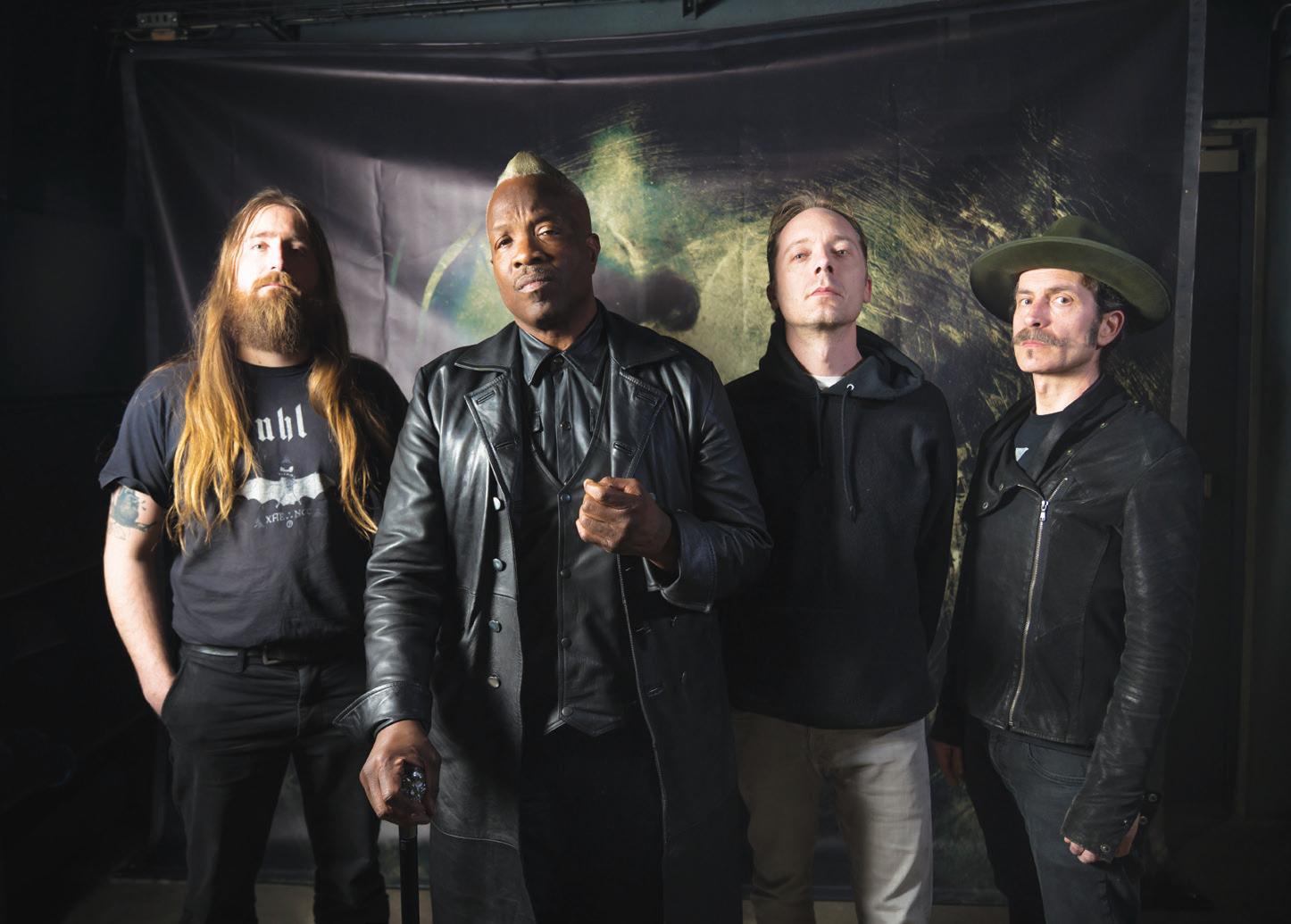
Nashville metalcore outfit Orthodox (not to be confused with the excellent Spanish doom band of the same name) have been rumbling around since 2011, becoming one of the most prominent names in the nu-metal revival with an approach that hybridized that style with relatively traditional hardcore. But on last month’s A Door Le Open (Century Media), they move away from nu metal to dig into a blistering sound indebted to the likes of Meshuggah and Gojira. The new album is tightly wound, raw, and surprisingly diverse: Though Slipknot influences remain on “Sacred Place” and “Blend in With the
Weak” (which features vocalist Matt McDougal of Connecticut metalcore band Boundaries), Orthodox shi gears with the filthy blackened thrash of “Godless Grace” and “Searching for a Pulse,” where guitar interjections that sound like vintage electronic toys flash through relentless slate-gray riffs as heavy as an Acme anvil flattening Wile E. Coyote. Adam Easterling’s shape-shi ing vocals trade off between guttural growls, venomous spitting, and forlorn spoken word, and the band get more interesting the more they experiment. On “Commit to Consequence” (featuring vocalist Andrew Neufeld

of hardcore greats Comeback Kid), which deals with taking accountability for your wrongdoing, they manage to make twisted guitar squawks, steamroller bass, and uneasy, slow-grooving breaks feel introspective. —JAMIE LUDWIG
Natalie Bergman 8:30 PM, Hideout, 1354 W. Wabansia, sold out. 21+
When life hits you with a wrecking ball, it can be tempting to retreat into yourself, but singersongwriter Natalie Bergman has demonstrated how powerful it can be to evolve through grief in public. As a teenager, the Barrington native began performing with Nomo, the Afrobeat-inspired jazz- fusion band led by her older brother, multiinstrumentalist Elliot Bergman, and in 2011 the siblings launched the duo project Wild Belle. With a whimsical, tropical blend of pop, dub, reggae, and R&B, Wild Belle could transport you to a fantastical seaside paradise, and by spring 2019, they’d released their third record, Everybody One of a Kind. But in October of that year, as the duo were waiting to take the stage for their debut performance at Radio City Music Hall, they learned their father and stepmother had been killed in a car accident. In the aftermath, Bergman turned to music and her Christian faith to process the loss, and in 2021 she released her debut solo LP, Mercy , on Third Man. She’d conceived of its stripped-down, serene mix of gospel, worship music, folk, and pop—a radical departure from Wild Belle’s sound— during a silent retreat at a Benedictine monastery in New Mexico. She wrote, recorded, and produced Mercy in near solitude at home in Los Angeles and Chicago.
Bergman’s latest album, the brand-new My Home Is Not in This World , doesn’t abandon the spiri-
tual realm, but it focuses more on the intricacies of this one. To hear her sing it, life is pretty good, even when it’s bittersweet. Bergman gave birth to a son last year, and that new love gives the record much of its lightness: On the lullaby-like “Song for Arthur,” she tells her son that he gave her a reason to get out of bed a er years of mourning. Like much of Bergman’s work, My Home takes influence from a variety of styles, but it most firmly embraces the 60s soul and R&B she’s adored since childhood. The luscious orchestrations of opener “Lonely Road” hark back to the days of pop-soul sirens wearing chiffon dresses and bouffant hairstyles; the impassioned ballad “Looking for You” is destined to be a first dance for countless newlyweds; and the shimmering electro-pop of “Dance” glides on rhythms worthy of the Funk Brothers. That said, you can also hear Bergman’s affinity for folk and country. On “Stop, Please Don’t Go,” while Bergman gently pleads with a lover, a sweet flute solo seems to peek out from between palm trees; on the swaggering single “Gunslinger,” she tells the tale of a toxic yet irresistible relationship over a countrysoul groove that recalls Lee Hazlewood and Nancy Sinatra, with smoky whispers of Serge Gainsbourg–style romance. (The fashion and styling in the song’s retro video pay clear homage to Sinatra.) Bergman’s decades of experience as a songwriter show throughout My Home , and her voice has never sounded earthier or more inviting. The record closes with the breezy yet reverent gospel folk of “California,” which casts her adopted home state as a bit of heaven on earth. Despite all the ups and downs, Bergman sounds at peace. —JAMIE LUDWIG
Deonte Baker See Pick of the Week on page 24. The U.R.F and DJ Wizzard open. 8 PM, Reggies Music Joint, 2105 S. State, $27.24. 21+ v


A furry ear to the ground of the local music scene

CHICAGO INDEPENDENT RADIO Project debuted as an online broadcast in January 2010. To this day, only founder and general manager Shawn Campbell draws a salary— CHIRP is otherwise staffed entirely by volunteers. At present, more than 250 people are involved. Clarence Ewing worked for the station from year one—Campbell remembers meeting him at a new volunteer orientation in 2010, where he had a lot of questions. “He started working with our blog team almost immediately a er he joined,” Campbell says, “and never stopped the entire time he was there.” Ewing became CHIRP’s blog director (later online media codirector), and in 2012 he started DJing, running a show he called The Million Year Trip on Sundays from 2 till 4 PM. Ewing missed his show on June 22—he called in a substitute because he felt sick—and died the next day at age 54.
Longtime CHIRP DJ and board member emeritus Mike Bennett took Ewing’s June 29 slot, which served as a memorial. Bennett spun some of Ewing’s favorite music—including tracks by Jackie Shane, Tinariwen, and Circuit des Yeux, all sourced from Ewing’s contributions to CHIRP’s year-end “best albums” lists. Ewing oversaw that annual feature, and any volunteer could contribute a top-ten list. He not only posted every list but also compiled them into a single all-station top ten. As Bennett said on that broadcast, “It was Clarence who made our blog what it was.”
Campbell says Ewing did a lot to encourage CHIRP volunteers to contribute to the blog. “The fact that he was editing other peoples’ writing and making them better is really representative of who he was,” she says. “He did a weekly show for 12 years, but he was never somebody who wanted to make himself the story. He was never putting himself in the spotlight. He just was very much someone who wanted to help everyone be the best
they could be.”
As much as Ewing became a fixture at the station, Campbell says he kept his private life to himself. Born in Omaha, Nebraska, Ewing earned a bachelor’s degree from Harvard and an MBA from DePaul’s Kellstadt Graduate School of Business. During the day, he worked as an operations manager in recruiting and admissions at the Academy for Urban School Leadership. As his sister Mona Ewing Yaeger put it in a statement for Bennett’s Million Year Trip broadcast, “Music is the fuel that drove my brother, Clarence, in everything he did.”
“He talked many times on the air about how he would discover things on people’s top-ten lists that he hadn’t had a chance to listen to, and had really dug into them and found treasures that he loved,” Campbell says. “We want people at CHIRP who are there because they love music, and they’re endlessly curious about music, and they love sharing what they’re learning—not just what they already know, but what they’re learning about music with listeners. He was a really stellar example of that.”
CHIRP will pay tribute to Ewing again on Tuesday, July 15, with its monthly trivia night at the Lincoln Avenue location of Beermiscuous DJ moimoi hosts; the event, titled Words and Music, starts at 7 PM.
CHICAGO’S SOUTH SIDE has lost some marquee music festivals in recent years; the Silver Room Block Party called it quits in 2023, and last year Hyde Park Summer Fest organizers announced that the 2023 event had been its last hurrah. Fortunately, the Chosen Few Picnic & Festival still looks to be going strong. Now in its 35th year, the largest single-day house-music gathering in the world returns to Jackson Park on Saturday, July 12. Organizers have had years to perfect the fest’s formula, and little about its fundamentals has changed. Every member of the

legendary Chicago house collective— founder Wayne Williams , Jesse Saunders, Tony Hatchett, Alan King, Andre Hatchett , Terry Hunter , and Mike Dunn —will spin his own set. As usual, the Chosen Few have invited several guests to perform too: This year’s picnic includes vintage R&B group Ladies of Skyy and dance-music veterans Danny Krivit and David Morales
The fest feels more like a big family cookout than a music festival, in part because it grew out of a Fourth of July picnic thrown by the Hatchett family. Throughout the 1990s and 2000s, the Chosen Few Picnic attracted hundreds, then thousands, of Chicagoans who also saw the gathering as a great way to hang out with family and friends. For decades, the picnic was free to attend; it began charging a fee in 2010. Even as rising production and security costs have felled other fests, the Chosen Few Picnic has kept ticket prices relatively low (general admission is $80 this year) and held onto the picnic vibe that’s made it one of Chicago’s best summertime parties. If you’ve never gone, the 35th year ain’t a bad time to start.
CHICAGO POSTPUNK TRIO Ganser are gonna drop a monster album in August called Animal Hospital . Gossip Wolf strongly suspects the band will play material from that record on Friday, July 11, when they headline the first night of Kilbourn Park ’s Summer Concert Series Plum open; the free, all-ages show kicks off at 6 PM. Future Kilbourn Park shows include Finom and Senite (July 18) and Así Así and Surgery Boys with Quin Kirchner (July 25).
LAST WEEK, CHICAGO TWEE-POP trio Gosh Diggity dropped Good Luck! Have Fun! , which leans hard on chiptune synth flourishes. The band celebrates the new album by headlining Beat Kitchen on Sunday, July 13. Jacob Horn Trio and Hard Femme open. Tickets cost $21.80; the show kicks off at 8 PM, and it’s 17+. —LEOR GALIL
Got a tip? Email your Chicago music news to

(Chicago, IL) Apex Fintech Services LLC seeks Product Manager w/Bach or for deg equiv in bus, bus adm, fin, CS or rltd fld & 2 yrs exp in job offrd or in prod mngnt incl lead prod devp teams thru complex enterp initiat, SaaS/Cloud Archit, API pltfrm, legcy app consol & Agile prac. Pos bsed in Chicago offc w/option to occas WFH home in Chicago area. Up to 30% dom or intl trvl. Salary $125K/yr. See benefits at https://peak6.com/ careers/. Apply to sedoyle@ apexfintechsolutions.com or HR, 141 W Jackson Blvd, Ste 500, Chicago, IL 60604
CBRE, Inc. has an oppty for a Data Intelligence Mgr. Position based in Chicago, IL. Hybrid position reqr’ng work in the office w/ the ability to telecommute on days when not in the office. $116,334.00/ yr to $130,000.00/ yr. Bonus target between 10-20% & comprehensive benefits package for full time employees incldng health, dental, 401K & wellness benefits. Email resume w/Ref# 8533113 to GM-Recruitment@ CBRE.com. Must be legally auth to work in the U.S. w/o spnsrshp. EOE
Lead IT Analyst (Quality Assurance). Ulta, Inc. Bolingbrook, IL. Dev test strategy doc & provide updates throughout project lifecycle. BS: CS, Elec Engg or rel. 5 yrs QA exp. Other exp req. Pay: $124,945 - $125,945/yr. Apply: https://careers.ulta. com/careers/ Job ID 372587 Mabbly LLC in Chicago, IL seeks Jr Mktg Coordinator w/BS in Mktg, BA, Comms or rltd. Familiarity w/ digital mktg concepts & workflows. Proficiency in English & Ukrainian. Send res: team@mabbly.com
Customer Development/ Software QA Engineer for Forsk US Inc, 200 S Wacker Dr, Ste 3100, Chicago, IL 60606 BS in TeleCommEng, Networking Eng, CompuSci or closely related field. Foreign degree acceptable. 3yrs exp as Software QA Eng or DevOpsEng or closely related role, using Python, Rest API and C#; $83K/yr.plus discretionary benefits. Send resume to Nicolas Dubois at Forsk address.
Loyola University Chicago is seeking an Assistant Professor in Chicago, IL to teach undergraduate and graduate classes in applied calculus, ordinary differential equations, and real analysis. Full time. $46,000 - $95,000/ year. Competitive compensation. https://www.luc.edu/ hr/benefits/ Please send resume to ptingley@luc.edu and reference job #112789.
(Chicago, IL) Apex Fintech Services LLC seeks Software Engineer II w/ Bach or for deg equiv in CS CIS IM, CE or rltd fld & 3 yr exp in the job offr or as Sftw Dvlp incl exp in Java, Python, C++ or Go. Hybrid role-Occas telecom perm in Chicago area. Salary $110K/ yr. See benefits at https:// peak6.com/careers/. Apply to mnazari@peak6.com or HR, 141 W Jackson Blvd, Ste 500, Chicago, IL 60604
Manager, Business & Digital Analytics, AbbVie US LLC, Mettawa, IL: Develop & execute analytical plan for various components w/in Patient Access & Reimbursement team.
Define & co-create analytical use cases & KPI tracking to ensure patient support programs are meeting brand business objectives for optimal support of patients & health care professionals. Translate brand objectives into analysis design & supports opportunity assessment through use & understanding of multiple data assets. Leverage analytic models to critical issues & meet business criteria. Must have a Bachelor’s degree in Computer Science, Computer Engineering, Management Information Systems, Computer Information Systems, Information Technology, Data Analytics, Business Analytics or related field and 6 years of experience as a Data Analyst or similar role working with: (i) Data Visualization / Reporting (Dataiku, Power BI, etc.); (ii) SQL coding (BigQuery, Hue, SQL Assistant, etc.); (iii) Statistical Testing & Python programming; and (iv) Advance Modeling and Predictive analytics to address key business issues (cost benefit, business impact, etc.). Experience may be gained concurrently. Salary Range: $143,906.00$197,000.00 per year. Apply online at https://careers. abbvie.com/en or send resume to Job.opportunity. abbvie@abbvie.com. Refer to Req ID: REF41390O.
Manager I, Consumer Omni-Channel Analytics, AbbVie US LLC, Mettawa, IL. Onsite position, (3 days office/2 days WFH eligible). Responsible for omnichannel analytics supporting the growing roadmap of consumer
capabilities, designing & conducting analytics to optimize an integrated customer experience across media channels; Provide analytic support & data-driven guidance for optimizing marketing tactics across multiple therapeutics & brands, with limited supervision directly or via vendors; Design test&-learn strategies for A/B & multivariate/statistical tests across digital channels to identify causal impact & iteratively improve media performance through key learnings; Utilize consumerlevel data to build advanced analytics models, including media lift measurement, multi-touch attribution, & audience quality, to optimize marketing tactics, formulate strategy, & provide tactical investment recommendations; Collaborate with internal & external partners to build digital analytics dashboards & deliver key insights across the US product portfolio. Must possess a Bachelor’s degree or foreign academic equivalent in Mathematics, Economics, Engineering, or a highly related field of study & 5 years of work experience conducting Data Analytics. Of the work experience required, must have: 5 years (i) executing data automations, creating custom views, & writing complex queries in SQL, & (ii) developing & designing dashboards using at least 1 of Qlik, Tableau, or Power BI; 4 years performing (i) Marketing Analytics, & (ii) Omni-Channel Measurement & Optimization; 3 years interpreting & developing business insights using either Adobe Analytics or Google Analytics web analytics tool; 2 years (i) working in a matrix environment supporting business stakeholders, & (ii) programming in R or Python. Experience may be gained concurrently.
Salary Range: $151,417.84$202,500.00 per year. Apply online at https://careers. abbvie.com/en or send resume to Job.opportunity. abbvie@abbvie.com. Refer to Req ID: REF41429A.
Morningstar, Inc. seeks Content Specialist (multiple positions) in Chicago, IL to gather and refine broad business requirements from Morningstar commercial products into concrete implementation plans with clear resource estimates to aid with enterprise-level prioritization (15%). BS in Math, Econ, or rltd analytical field or foreign equivalent & 3 yrs of financial data exp req’d. Add’l specific skills req’d. Base salary: $112,814-$132,000/year. For position details & to apply, visit: https://www. morningstar.com/careers; ref. job ID REQ-051452.
Project Manager-MultiFamily Construction. Chicago, IL. Perf daily on-site inspections. Mng day-to-day oprn’l aspects of proj(s). Dvlp, maint, & enforce proj site logistics plan & temp facilities plan.
Establish & monitor admin procedures for proj. Ensure all reqmts & obligations pertaining to subcontracts, insurance, safety, MBE/WBE & local community hiring, & labor relations are met. Dvlp & implmnt proj budget, dvlp scopes of wrk, sched & contract bid docs. Possess wrk’g knowl of all proj plans. Initiate, establish & maint wrk’g relationships w/ owner/architect/inspecting architects & subcontractors to facilitate construction activities. Conduct sched proj coord’n meetings. Prep subcontractor/vendor change orders in coord’n w/ VPC or SPM. Ensure all safety precautions are adhered by construction wrkers. Mng & ensure compliance w/ MBE/ WBE/DBE & community hiring initiatives. Req Bachelor’s from accredited construction rltd major (Construction Mgmt, Engg, or Architecture) & 2 yrs exp as Project Manager. Must have current OSHA 30-hr construction safety & health cert; RRP “Certified Renovator” cert preferred; knowl of architectural, structural &/or MEP systs. $120,869/yr. Send resume to: The Related Companies, L.P., 350 W Hubbard, Ste 300, Chicago, IL 60654.
Roxul USA INC, DBA Rockwool is accepting resumes for Quality Manager in Chicago, IL: Setup and improve quality systems across all operations and plants to achieve and maintain compliance requirements for industry regulatory testing agencies. Up to 15% domestic & international travel req’d. Annual salary: $156,750-$199,00/ yr. Email resume to recruit.na@rockwool. com. Must reference Ref. GV-QM.
Recruit Tek
Senior Software Developer. Design, build, and enhance application software. Develop, deploy, and cloud infrastructure software(AWS), including MCPS and RAGs. Design and implement on-site delivery models. Frontend and backend experience preferred. Salesforce certification is a plus. Email resume: ikhan@ recruittek.com Work Area: Hanover Park, IL
Relativity (Chicago, IL) seeks Lead Software Engineer to provide tech. expertise on Core Toolchain team’s product architecture & mentor teammates. Remote work option from anywhere in the U.S. Salary: $185,600/ yr. Submit resumes to Recruiting@relativity.com, to be considered, ref. Job ID: 25-0381 in the subject line.
Relativity (Chicago, IL) seeks Lead SRE Engineer
resp. for driving customer confidence by assuring the quality of current & future software products & to contribute to a motivating environment that empowers teams & individuals to engineer performant & reliable software through SRE best practices & principles. Remote work option from anywhere in the U.S. Salary: $150,000/ yr. Submit resumes to Recruiting@relativity. com, to be considered, reference Job ID: 250382 in the subject line.
Senior Underwriter, Management Liability/ D&O (ACE American Insurance Company (Chubb), Chicago, IL): Underwriting new and renewal business, conducting underwriting analysis and determining best course of action on a risk specific basis; Compiling competitive information to assist in product development recommendations; Managing key account relationships and expectations. Reqs: Exp prfmg econ forecastg, financ statemt anlys, & risk prognosis; Exp usg S&P Capital IQ, Excel Macros, & legal info srcs to assist u/ wrtg lg new & rnwl buses; Exp cndctg u/wrtg anlys & detrmng actn on risk basis; Exp maintg u/wrtg qlty stds i.e. obtaing int apprvls, conformg cvrgs to state regs, & incl file docatn & rationale; Exp as POC for acct relatns, maintg high lvl visibility thru mgmt, commun; Usg risk & profitablty anlys to det suitablty of opps & creatg dvlpmt strats, incl originatg prospects for new bus, drvg acct roundg & idg cross-sellg & alliance opps; & Exp overseeg broker/agent relatns, ldg agency anlys & plng, dvlpg & executg strat to grow. Reqs BS or frgn equiv in Bus, Acct, Finance or rltd & 3 yrs exp as U/ wr or rltd. Hybrid optn WFH may be avlbl. Travel: up to 5% in US. Salary $73,750-116,700/yr. CV to svaval@chubb.com
Sr. Technical Lead (Bachelor’s w/ 5 yrs exp or Master’s w/ 3 yrs exp; Major: Comp Engg or equiv.) - Chicago, IL. Job entails working w/ & reqs exp incl: Data MGMT, SQL Server, SSIS, SSRS, .NET, C#, VB.NET, ASP.NET, BizTalk, Web Services, ADO.NET, XML, WCF, LINQ, QNXT System & EDI Manager. $148,949.00. Medical Insurance, Dental, Vision, Life Insurance, Paid Time Off, 401(k). Various worksites: relocation to project-based unanticipated worksites within USA possible. Send resumes to WindyCity Technologies Inc., Attn: HR, 3601 W. Devon Ave, Ste. 306, Chicago, IL 60659.
CTC Trading Group, LLC seeks a Sr. Engineer in Chicago, IL to partner with the traders and quants to understand the most important problems to guide how and where we innovate. Wage Range: $200,000$300,000 per year. Apply at jobpostingtoday. com/ Ref #72122.
Associate - Baker & McKenzie LLP - Chicago, Illinois: Manage & implement project development & construction transactions in the energy, mining, infrastructure & commercial real estate sectors; engage in client relationships & manage junior attorneys & staff; draft, negotiate & revise design, consultancy & construction agreements. Must have a JD, LLM, or foreign equivalent & at least 5 years of work experience in a law firm. Of experience required, must have 5 years with each of the following: (i) drafting, negotiating, revising, & managing the implementation of crossborder & US engineering and construction contracts for projects valued in excess of $50M; (ii) advising on project development & construction transactions in the energy, mining, infrastructure & commercial real estate sectors, including multi-site US & LatAm projects & large construction program rollouts; (iii) advising
on project development & construction problems & claim management processes under crossborder US design, engineering & construction contracts; & (iv) training client teams on best practices & lessons learned in implementing construction projects & assisting w/ standardization of design & construction agreement forms to ensure consistencies & efficiencies. Must be licensed to practice law in Illinois. Exp. may be gained concurrently. Please apply online at bakermckenzie. com/careers.

CHESTNUT ORGANIZING AND CLEANING SERVICES: especially for people who need an organizing service because of depression, elderly, physical or mental challenges or other causes for your home’s clutter, disorganization, dysfunction, etc. We can organize for the downsizing of your current possessions to more easily move into a smaller home. With your help, we can help to organize your move. We can organize and clean for the deceased in lieu of having the bereaved needing to do the preparation to sell or rent the deceased’s home. We are absolutely not judgmental; we’ve seen and done “worse” than your job assignment. With your help, can we please help you? Chestnut Cleaning Service: 312-332-5575. www.ChestnutCleaning. com www. ChestnutCleaning.com














